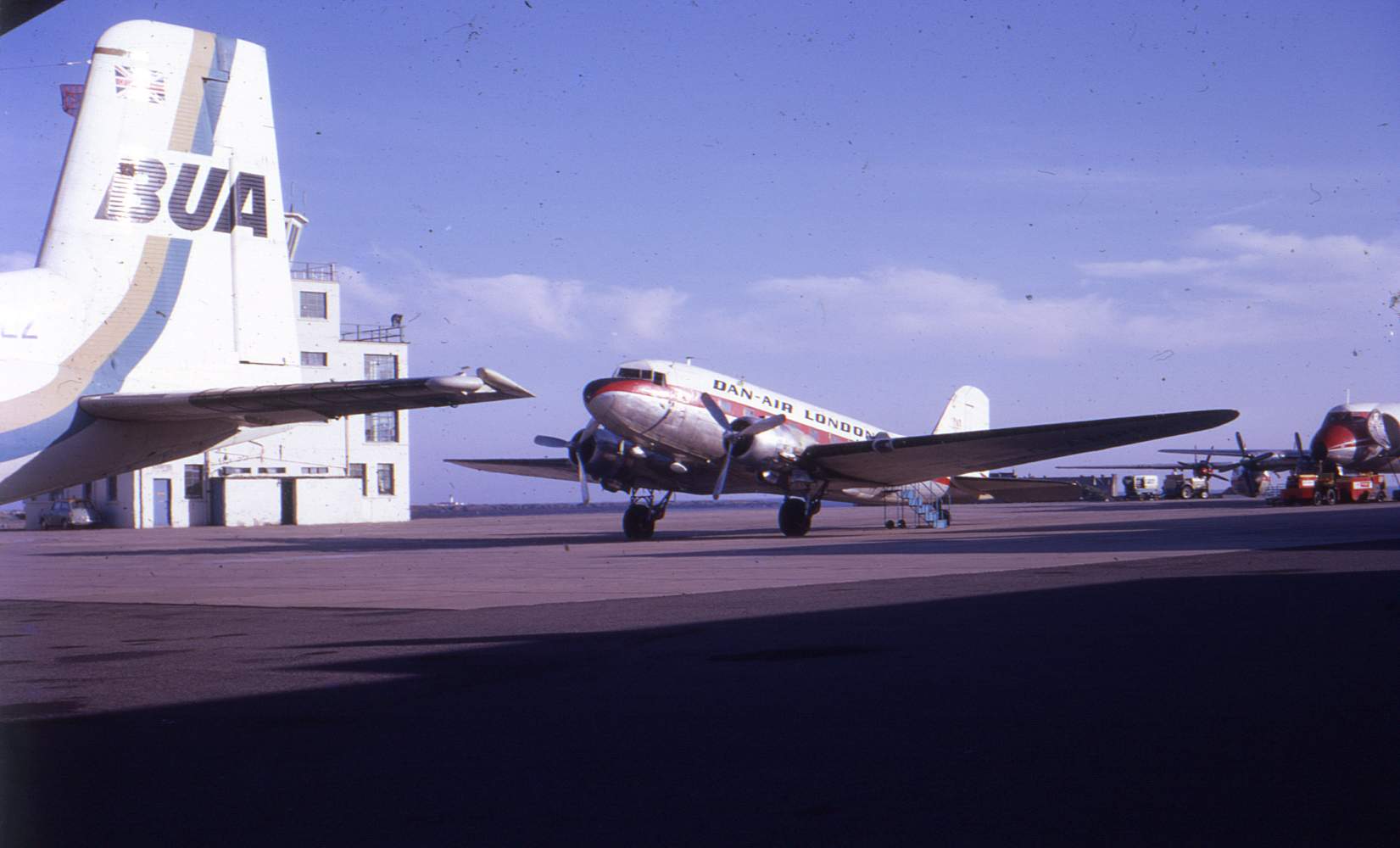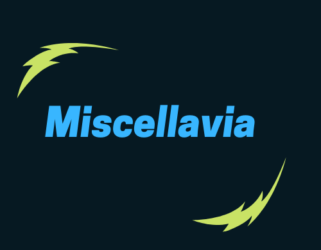Career Highlights 1943- 1978
* Took part in Overlord carrying paratroops on Operation Tonga.
* Flew on first Overlord re-supply mission, Rob Roy 1.
* Towed a Horsa glider to Arnhem during Operation Market Garden
* Flew resupply mission to Arnhem on Sept 21st.
* Badly damaged on September 23rd during resupply to Arnhem.
* Pilot WO Ken Cranefield awarded DFC for Arnhem mission.
* Dropped supplies to Allied forces near Flushing in November 44.
* Towed a Horsa glider from RAF Birch during the Rhine Crossing.
* Demobbed to join Railway Air Services during 1946.
* Flew the first domestic air route of BEA on Feb 1st 1947.
* Became key part of BEA’s Pionair Leopard freight fleet.
* Sold to Airwork and leased to Skyways Coach Air for first full season of Coach Air services between London and Paris.
* Sold to Skyways in March 1957 and flew with them for 20 years.
* Adopted by RAFA on 2nd May 1976 in view of FZ681’s Arnhem history
* Had flown over 30,000 hours when sold to Ethiopia by Skyways Cargo
MILITARY CAREER:
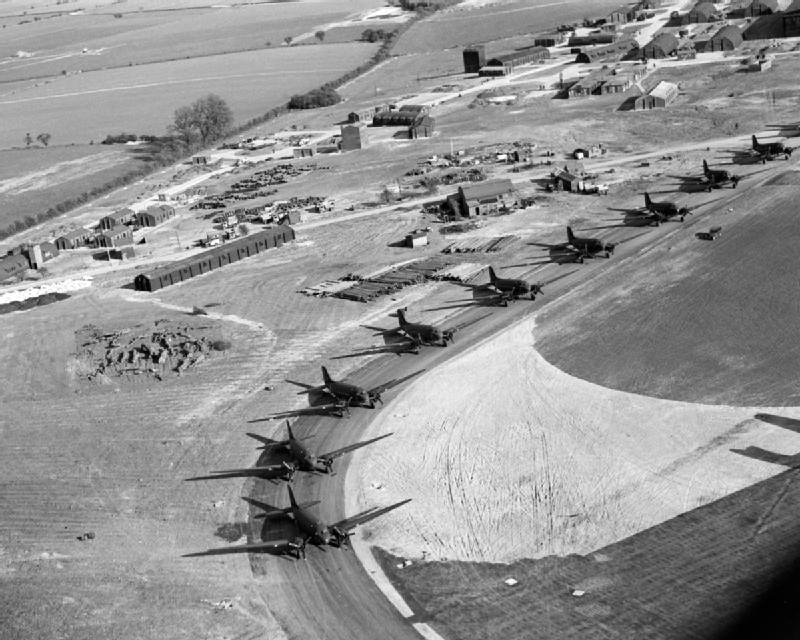
In mid-February 1944 big changes were taking place in preparation for Operation Overlord. 233 Squadron was transferred from Coastal Command duties in Gibraltar to Transport Command operations from a brand-new base in the Cotswolds. The Squadron advance party left Gibraltar on 21st February en route to Gosport where the Squadron’s UK-based maintenance base was located and where they were scheduled to commence commissioning of their new fleet of C-47 Dakotas.
C-47A-5-DK, s/n 12278, had been built for the USAAF as 42-108843 and delivered from Douglas’s Oklahoma City plant. Supplied to the RAF under Lend/ Lease as FZ681, she arrived at the RAF’s Canadian ferry base at Dorval, Montreal, on 24th February 1944. As such, she wasn’t one of the very first aircraft assigned to 233 Squadron but was part of around 13 Dakotas assembled at Dorval between 20th and 24th February ready for the Atlantic crossing to Britain. Upon reaching the UK, some of the aircraft assembled at Gosport, some at a temporary base at Bircham Newton, Norfolk, but, with the Squadron starting to move to their new home at Blakehill Farm between March 5th and 7th, it seems likely that FZ681 went directly to the new base.
During March, the squadron crews were trained at 107 Operational Training Unit (OTU) at Leicester East as well as at Blakehill Farm. Conversion to the Dakota was accompanied by training in glider towing, pannier dropping, paratrooper operations and long-distance formation flying during April. The first operation over enemy-held territory was a ‘nickelling’ operation dropping propaganda leaflets above France on April 26th. FZ681 took-off on the second such mission the following night with Flt.Lt Cody at the controls for a 3-aircraft operation over Alencon, Normandy. Unfortunately, FZ681 developed a technical fault while crossing the south coast at Shoreham and had to turn back.
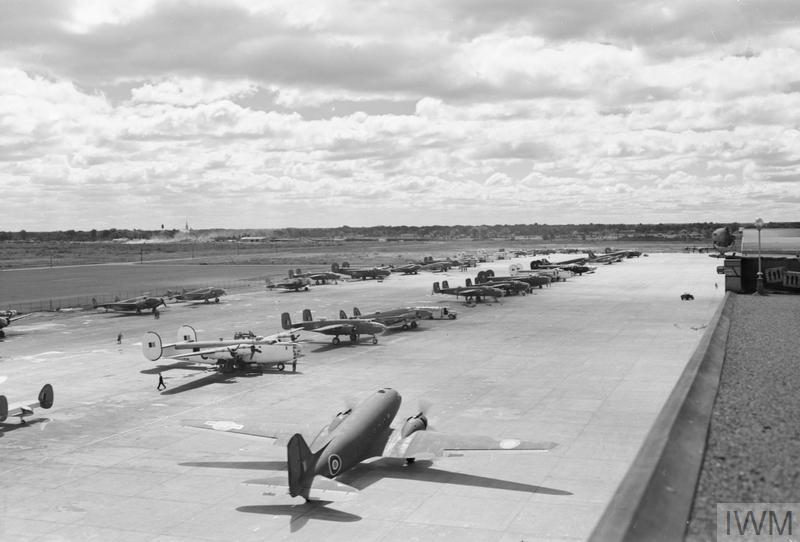
D-Day, Operation Overlord.
May 1944 involved further intensive training leading-up to the scheduled ‘D-Day’ of Operation Overlord’ in early June. Blakehill Farm was sealed-off at 14:00 on June 3rd while aircraft and gliders were prepared and crews briefed. Thirty 233 Squadron Dakotas took part in the first wave, Operation Tonga, with six towing gliders and twenty-four carrying paratroops of the 6th Airborne’s 8 Para Battalion. The Dakotas towing gliders commenced take-off at 22:40 on June 5th, the first of the remaining 24 was airborne at 23:11. FZ681, carrying troops, took-off at 23:15 flown by Flt. Sgt. Coventon. The Squadron was bound for Landing Zone ‘K’ and Drop Zone ‘K’ at Toufreville but experienced problems created by the incorrect placement of the of the Pathfinders’ Eureka beacons. Three glider-towing aircraft were mis-directed to DZ ‘N’ at Ranneville by the beacons and further misled by visual Verey Light signals. Two of the gliders were correctly-released at ‘K’ and the sixth crashed. FZ681 and the Squadron’s other 23 troop carriers commenced dropping the paras as from 00:54 in an area which, owing to the Pathfinder confusion, could best be described as ‘NW of Toufreville’. Number 8 Battalion had quite a free-ranging remit and achieved many of their objectives despite the confused drop. Flt. Sgt Coventon, Second Pilot Flt. Sgt Beighton and the rest of the crew landed FZ681 back at Blakehill at 02:49 on June 6th.
FZ681 and Flt.Sgt Coventon’s crew were back in action on the night of June 6th as part of the re-supply operation ‘Rob Roy 1’. Briefing of crews commenced at 14:00 and the first of the Squadron’s 21 Dakotas took-off at 22:20. FZ681 was airborne at 22:23 and had returned safely to base by 01:55 on June 7th. The mission had encountered increased flak during their flight and while dropping their panniers at DZ ‘N’, Ranneville. Some of the ordnance was fired by German batteries but some was considered to be ‘friendly’ fire’ from allied naval vessels.
The invasion force was able to quickly establish advanced landing strips to receive supplies, armaments and reinforcements and the first Transport Command aircraft to land on the Continent were 233 Squadron Dakotas on June 13th. FZ681 made her first landing in France on June 16th when she delivered screw-pickets to Advanced Landing Ground (ALG) B5, Le Fresne-Camilly. By then, the German forces were responding effectively to the invaders and shelling of the airstrip commenced 5 minutes after FZ681 had landed. Nonetheless, the aircraft was unloaded successfully and reloaded with casualties bound for English hospitals. These were some of the first flights to evacuate wounded soldiers and the Dakotas carried female nusing auxiliaries, the ‘Flying Nightingales’.
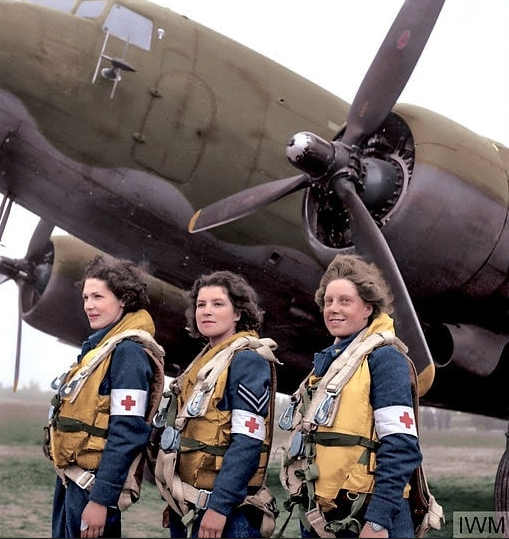
Resupply missions with casualty evacuation became the regular pattern for June 1944. FZ681 delivered bombs to B3/ St.Croix-sur-Mer on 20th and 21st June, captained respectively by Flying Officer Gustafson and Flt.Sgt Russell. On 24th, 2000 lbs of fighter spares were shipped to B2/ Bazenville and, on each occasion, casualties were repatriated either on stretchers or as walking-wounded. July operations for FZ681 remained similar: Flt.Sgt Coventon was back at the controls on July 13th taking mail to B14/ Amblie, returning with blood plasma boxes. On July 25th, Flt.Sgt. Ken Cranefield’s crew took FZ681 to Eastchurch as part of a 3-aircraft mission to move 183 (Typhoon) Squadron to france at B7/ Martragny. As usual, casualties were carried on the way home to the Cotswolds. August 1st saw Ken Cranefield (by now recorded as a Warrant Officer) piloting FZ681 from Blakehill to Westhampnett airfield at Chichester, the home of today’s Goodwood motor racing circuit. Passengers were transported to Manston before the Dakota returned to base. On August 6th F.O.Gustafson flew FZ681 to Eastchurch to collect passengers bound for St.Croix-sur-Mer before picking-up casualties at B14/ Amblie. Further training in day and night time formation flying took place in August with exercises such as ‘Consternation 2’. On the night of August 8th/ 9th WO Cranefield and FZ681 took part in a 2 hour 35 minute mass glider night cross-country exercise with pannier-dropping practice. On August 19th, FZ681 evacuated casualties from Amblie again after taking part in a 14-aircraft lift taking 145 Wing to B8/ Sommervieu from Tangmere.
The American army was moving south-west into Brittany at some speed during August and, on 26th, Squadron Leader C.Mackenzie flew FZ681 to Avranches with military passengers. The ‘Falaise Gap’ had also been sealed-off entrapping a large number of Axis troops. The Allies were finally on their way to Paris and, on 25th August, the German garrison surrendered, ending hostilities in the french capital but creating a crisis in food supplies. A huge humanitarian airlift was inaugurated and, in total, around 600 RAF and USAAF aircraft were drafted in to deliver food to the newly-captured airfield at Orleans-Bricy. FZ681 was among the 24 Dakotas provided by 233 Squadron and Sqdn Ldr. Mackenzie was at the controls again for her first mission on August 27th. The runways at Bricy had been heavily bombed by the USAAF and hurried repair was necessary. In some cases, the runways and taxi-ways remained unsuitable and, of 233’s aircraft, KG441 and FZ681 respectively suffered hydraulic problems and tail-wheel damage. FZ681’s crew returned to Blakehill in another Dakota while overnight repairs were instigated. Flt. Lt. Barlay and his crew arrived the following evening and flew the repaired FZ681 home empty.
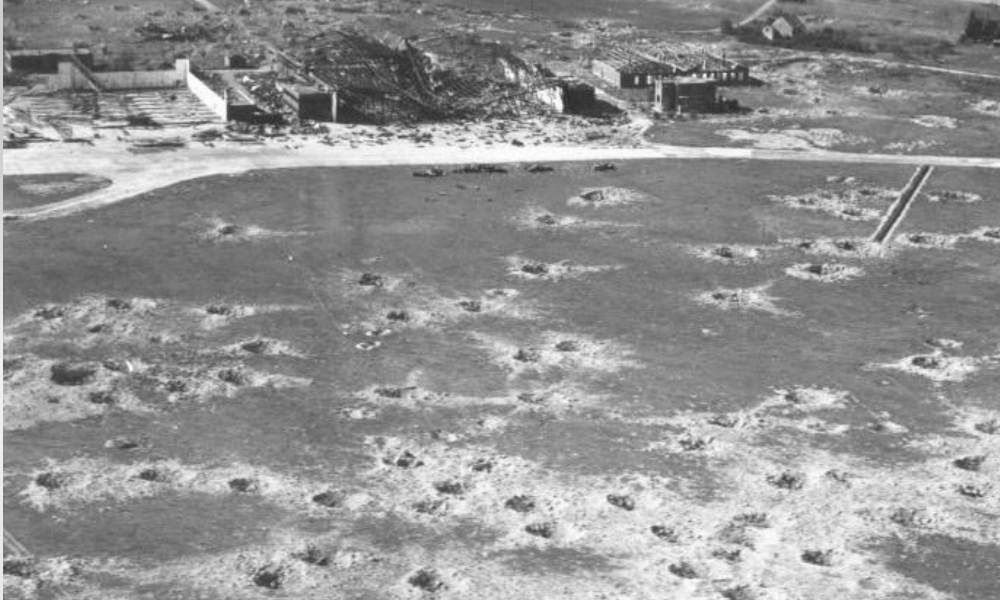
Warrant Officer Cranefield’s crew and FZ681 started the month of September 1944 together with a formation-flying exercise on 3rd. – they would also end the month together on a near-fatal mission to Arnhem. On 4th September Ken Cranefield flew FZ681 from Blakehill to Northolt as part of a 15-aircraft mission moving Tactical Air Force 34 Wing to A12/ Lignerolles. The Wing comprised 69 Squadron Spitfire XIs and 140 Squadron Mosquito XVIs, both used for photo reconnaissance. FZ681 stayed overnight at the airstrip, then transferred 6 passengers to B45/ Amiens before returning to Blakehill via B14/ Amblie. A similar mission was flown on 10th when Cranefield’s crew and FZ681 carried passengers and equipment from Northolt to B6/ Coulombs. On 12th September Flt. Lt.Barlay lifted-off from Blakehill in FZ681 at 09:31 en route to B60/ Grimbergen, Belgium, with fuel and munitions. The aircraft returned to Lyneham prior to a second lift to B60 in the afternoon. The Belgian airfield had been liberated on 4th September as the allies drive across Europe pushed into the Low Countries. Ken Cranefield, along with 2nd Pilot Barry Stableford, Navigator Terry Holmes and Radio Operator Flt.Sgt D.Hastings, took FZ681 to another important Belgian destination, B58/ Brussels-Melsbroek, the following day, September 13th, as part of an 11-aircraft lift delivering ammunition. After an overnight stay, the crew flew on to B48/ Amiens to collect passengers and freight for B56/ Brussels-Evere. British troops had entered the Belgian capital on September 3rd and, before long, hospital facilities had been established to cater for injured troops.
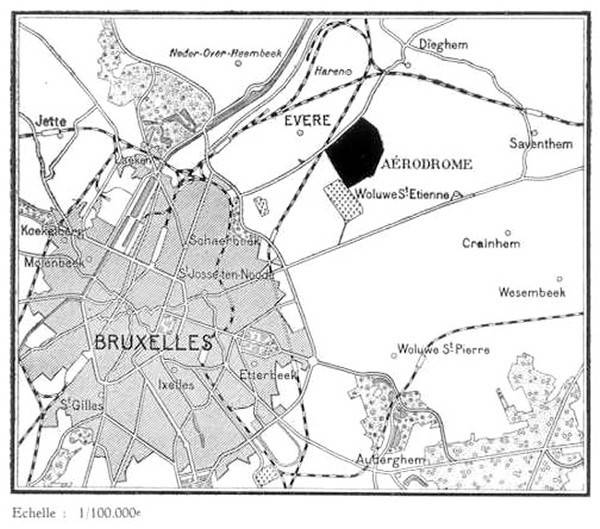
The swift allied advance had led to the planning of a series of airborne assaults, each becoming outdated by the rapidly moving front line until the fateful Market Garden operation. Following FZ681’s return to base from Brussels on September 14th, all 233 Squadron Dakotas were prepared for the imminent airborne operation. September 15th was taken-up by briefings and equipment preparation. The following day, gliders and aircraft were marshaled ready for the daytime operation on Sunday 17th. The first of twenty-one 233 Squadron Dakotas towing gliders was airborne just before 10:00 on a fine, slightly misty autumn morning. W.O Cranefield lifted FZ681 into the air at 10:10, en route to Arnhem towing a Horsa loaded with elements of the British First Airborne Division. This initial mission went well with the gliders released according to plan, little enemy resistance and a safe return to Blakehill Farm. FZ681 was back on the ground at 15:35.
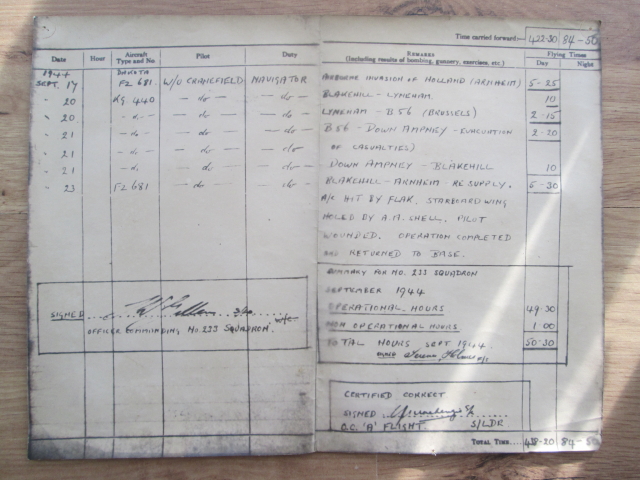
FZ681 didn’t fly operationally on 18th and 19th, but was back in the air, flown by Flt.Lt.A.Cody, for the resupply mission flown on September 21st. Cody’s crew were again flying 681 on 22nd September for a 3-aircraft operation delivering drop tanks from Manston to B56/ Brussels-Evere, returning to Broadwell with stretcher-borne casualties. The following day, it would be FZ681’s crew which would need to be met by an ambulance upon arrival at Blakehill. Poor weather had compromised earlier resupply missions and, by 23rd September, the British ground forces in Arnhem were suffering badly. Squadron Leader Mackie took off from Blakehill Farm at 13:17 leading 17 aircraft carrying panniers for the First Airborne Division. FZ681, flown by Ken Cranefield, was airborne two minutes later. Although Allied fighter cover was much better than on some previous missions, the enemy flak in the region of Arnhem was intense. Nine aircraft recorded anti-aircraft damage but it was FZ681 which sustained the worst. As the Dakota approached the drop zone, the flak blew a 2′ diameter hole in the starboard wing, damaging the aileron and, according to the Wireless Operator, setting fire to the wing. Cranefield later said that small arms fire hitting FZ681 sounded like peanuts battering the fuselage as he fought to fly the Dakota to the target with limited aileron control. Further shrapnel sliced into the cockpit area hitting Ken Cranefield in the knee and thigh but he continued to fly the Dakota until the supply drop had been made. He subsequently handed over control to Flt.Sgt Barry Stableford, a New Zealander with limited flying hours on Dakotas, while Navigator Terry Holmes and Wireless Operator Hastings administered morphine to the wounded Captain and attempted to staunch the flow of blood with a tourniquet fashioned from the microphone cable. Despite having to wrestle with the aircraft controls all the way back across the North Sea, Stableford managed to land the Dakota safely at Blakehill Farm at 18:30. Ken Cranefield survived but, after many months of hospital recuperation, he would never fly again.
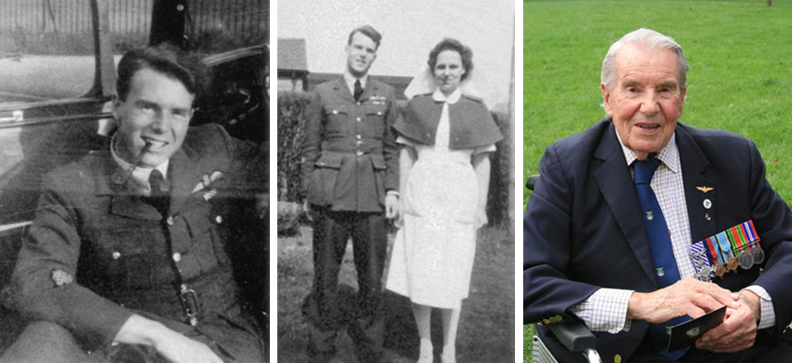
It is a tribute to RAF mechanics that FZ681 was repaired and back in action by October 5th when F.O J.Fram flew her to B56/ Brussels as part of a 7-aircraft mission delivering petrol. Brussels-Evere was again the destination on October 7th (when Pilot Officer G.B.Wright was part of a 10 aircraft flight carrying ammunition) and on October 10th (when P.O Dijkstra was part of a 6-aircraft delivery, also ammunition). On 11th October, F.O Merricks took FZ681 on a 9-aircraft operation delivering lubricating oil to Brussels, night-stopped and then returned to Down Ampney with evacuated casualties. Flying Officer Priestley, who would become a regular pilot of FZ681, was on an 8-aircraft mission carrying army freight to B56 on 13th October, returning the following day. A trip to Northolt to collect passengers on 15th proved to be a failure when no willing customers could be located! The next day, Priestley’s crew took FZ681, loaded with 4000 lbs of mail, newspapers and passengers to B17/ Caen-Carpiquet before heading home with a stretcher case and another load of mail. October 17th saw FO Priestley heading for Northolt again and, this time, 12 passengers bound for B78/ Eindhoven were located. The aircraft over-nighted at Brussels before taking 6 passengers on to B70/ Antwerp-Deurne where the weather delayed passage back to Eindhoven. Four passengers were then returned to Northolt.
With the Allies drive across Northern Europe to the German border blunted by Arnhem, the operational pattern for 233 Squadron settled into a routine for the remainder of the year. Flights on 19th, 20th and 21st October saw FZ681 shuttling ammunition to Antwerp as part of multi-aircraft operations which then returned empty or with casualties bound for Down Ampney. On 22nd October, FO Priestley’s crew carried 2000 lbs of newspapers to B17/ Caen-Carpiquet before returning with freight and a passenger. Flt.Lt.Reid DFC was in command for a flight carrying army ordnance to Antwerp on 23rd. FO F.Priestley lifted from Blakehill at 07:57 on August 28th en route to the USAAF base at Wethersfield, Essex. Eight passengers and 4165 lbs of freight were embarked for A63/ Villeneuve Vertus in the Champagne region of France. Return passengers were carried back to Wethersfield before FZ681 landed back at Blakehill at 17:54. The last two days of the month passed similarly: on 29th FZ681 and KG437 transported miscellaneous freight to B50/ Vichy-en-Artois and, on 30th, FO J.Stewart’s crew carried 3395 lbs of newspapers and 1586 lbs of supplies to B58/ Brussels-Melsbroek before returning with blood boxes.
3rd November: FZ681, piloted by FO Priestley, took 5 passengers from Northolt to B78/ Eindhoven, 10 passengers on to B56/ Brussels-Evere. Returning to Eindhoven for an overnight stop, the return to Northolt on 4th November carried 20 passengers.
5th November: FZ681 was one of six aircraft carrying clothing from Bicester to Antwerp. A further stock of blankets was ferried from Bicester to B58/ Melsbroek on 9th November with FZ681 flown by PO White as part of a flight of three Dakotas. The return flight carried mail.
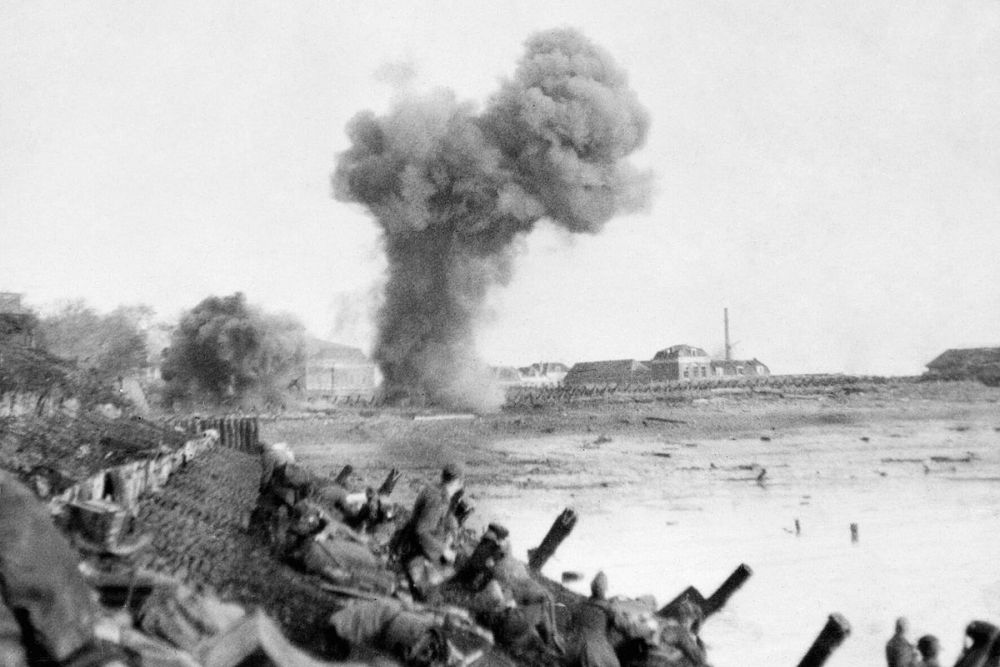
On 6th November, FZ681 briefly left routine transport missions behind in favour of an airborne resupply flight. British forces were continuing to meet German resistance in coastal Holland around the Scheldt estuary and six aircraft were equipped with loaded panniers for delivery to the beaches close to Flushing/ Vlissingen. After positioning to B70/ Antwerp, the aircraft successfully performed the supply drop and returned to Antwerp before crossing back to Blakehill Farm. FZ681 was one of five Dakotas making a further flight to Antwerp the following day with army freight.
With the allied advance needing air support and logistical back-up, new advanced landing (air)strips were created by army engineers as the front rolled forwards. Pierced Steel Planking was an essential surface for runways, taxiways and dispersals and it was 233 Squadrons task to deliver loads from Lyneham to B51/ Lille on 10th and 11th November and to B79/ Woensdrecht on 15th. FZ681 was involved on these three missions flown, respectively, by Flt.Sgt. Morrison, WO Diamond and Flt.Lt Priestley. Return legs were flown empty except on 11th when 2 passengers were conveyed from Lille to Blakehill Farm. Passengers were also the payload on November 12th when Flt. Lt Jenkins flew to B70/ Antwerp, returning to Ford with stretcher and walking casualties. The Dakota parked at Ford for the night.
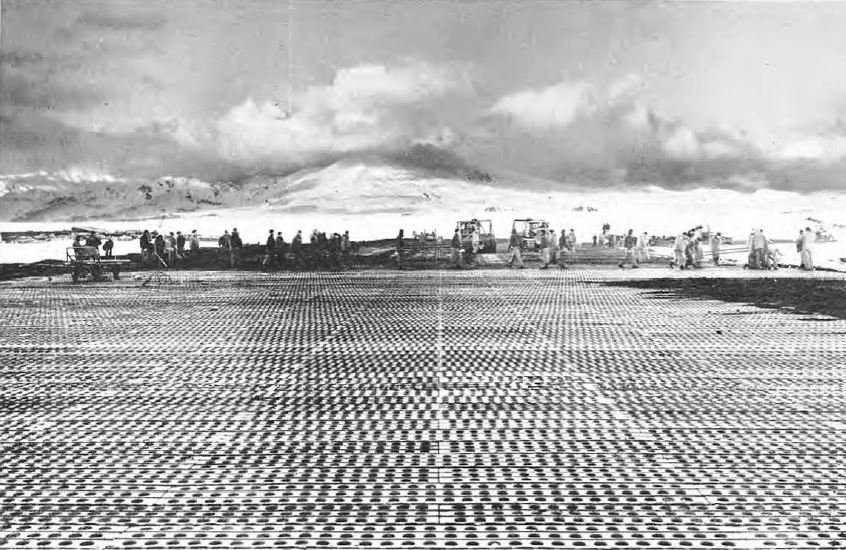
On November 14th, FZ681 hauled mail and freight from Tangmere to B58/ Brussels-Melsbroek and on to B17/ Caen. The Captain was WO Diamond. Mail was also the cargo for Melsbroek on November 18th when WO Lee’s crew flew FZ681. FO Chambers carried newspapers to B70/ Antwerp on 20th November and, in between, FZ681 was part of a big lift by 233 Squadron taking 138 Wing personnel from Blackbushe to B72/ Cambrai. Having helped deliver the Mosquito squadron, FZ681 was flown empty back to Blakehill Farm.
FZ681 had a quiet spell towards the end of November but was back in the air on 29th piloted by WO Lee as one of seven aircraft carrying munitions to B77/ Gilze-Rijen. The following day, the aircraft took part in glider towing training in preparation for the forthcoming Rhine Crossing.
December 1944 began with FZ681 and KG415 taking 10,000 lbs of freight to A46/ Toussus-le-Noble, an American airfield on the edge of Paris. 681’s crew comprised Flt.Lt.Priestley, Flt.Sgt Bright and Flt.Lt Taylor. The following day, December 2nd, Flt.Lt Haldimand lifted at 11:35 as part of an 8-aircraft operation delivering freight to B77/ Gilze-Rijen, returning empty. Army freight was also FZ681’s payload on 4th when FO Coleman’s crew flew to B17/ Caen and on to B70/ Antwerp. The next day, December 5th, seven aircraft, including FZ681, carried freight to B77/ Gilze-Rijen. On December 7th it was Flt.Lt Priestley who flew FZ681, in the company of KG585, with a total of 10,170 lbs of freight from Bicester to B58/ Melsbroek. FZ681 returned to Down Ampney with 15 stretcher casualties.
Flt. Lt Priestley and his crew flew FZ681 on multi-aircraft missions for most of the rest of the month. On December 8th, it was one of 9 aircraft taking army freight to B77/Gilze-Rijen; on 9th, four aircraft took equipment to A54/ Paris LeBourget; on 15th, army stores were flown to Melsbroek with FZ681 continuing to B65/ Maldegem in Belgium for an overnight stop before returning to Blakehill with passengers. In between, PO Saunders crew took took FZ681 to Bicester on December 11th as part of a 7-aircraft mission carrying army stores from the Oxfordshire airfield to B53/ Merville. Pilot Officer Green’s crew flew FZ681 as one of fourteen Dakotas carrying ammunition to B77/ Gilze-Rijen on December 12th. PO Diamond piloted FZ681 on 17th when five aircraft carried RAF equipment from Bicester to B78/ Eindhoven. Flt.Lt Priestley carried army freight to Melsbroek, stayed overnight and then returned with 18 stretcher and six walking wounded to Down Ampney in time for Christmas. On Boxing Day, FZ681 was part of a 10-aircraft mission carrying 203 US troops from Beaulieu to A83/ Valenciennes, possibly to reinforce allied positions during the Battle of the Bulge. FZ681 returned via Holmesley South where she remained for two nights. On the last day of the year, Flt.Lt Priestley flew FZ681 as one of five Dakotas taking passengers from 604 (Mosquito) Squadron from Odiham to B51/ Lille.
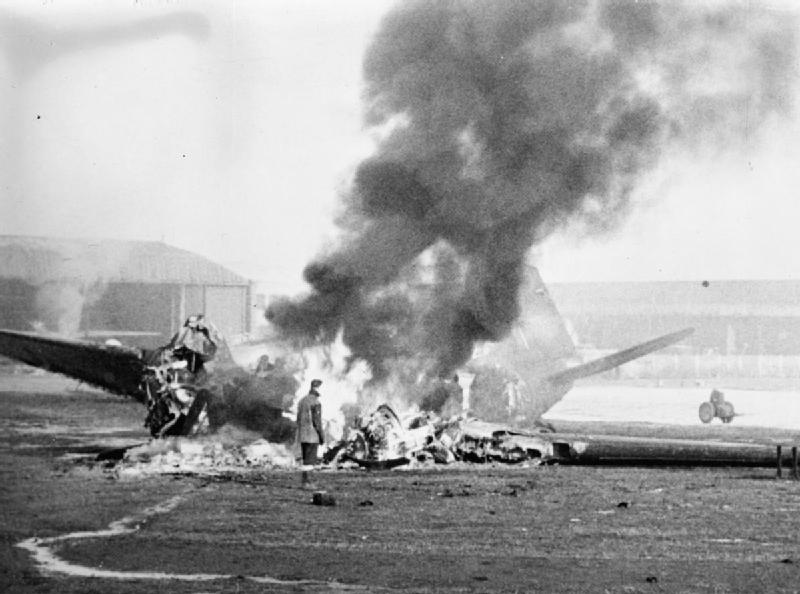
On January 1st 1945, 233 Squadron’s ‘B’ flight was seconded to B75/ Brussels Nivelles with twelve crews and eight Dakotas. FZ, as an aircraft assigned to ‘A’ flight, remained based at Blakehill Farm. For FZ681, the year commenced with Flt.Lt Priestley’s crew participating in a 5-aircraft lift taking RAF freight to B75/ Nivelles on 1st January and continued with a mixed-freight flight to B58/ Melsbroek on January 3rd. Pilot Officer Hall was at the controls for the next three days flying to Northolt on 4th prior to a passenger operation which was cancelled owing to bad weather. On 5th, a flight was made to B70/ Antwerp with spares and the following day a Blakehill to B75/ Nivelles freight service was operated.
Flt.Lt Priestley reclaimed FZ681 for a 3-aircraft mission taking spares to B78/ Eindhoven on 7th and an operation from Warmwell on January 10th which was called-off owing to inclement weather. In between, Wing Commander Mellor ‘borrowed’ FZ681 on January 9th in place of his usual transport, KG313. Kenneth Mellor took off at 11:05 as the leader of an 8-Dakota mission carrying 40,194 lbs of army freight to B75/ Nivelles. Fifty-one passengers were brought back in three of the aircraft. ‘A’ flight Commander Flt.Lt A.Cody was due to take FZ681 on a passenger mission from Warmwell on 13th but, again, the mission was cancelled due to poor weather. Instead Flt.Lt Priestley carried 19 passengers from Northolt to B58/ Melsbroek on 14th before returning with 15 passengers.
FO Smith commanded FZ681 as one of five aircraft carrying passengers from Melton Mowbray to Paris Le Bourget on 19th January – after a day’s delay due to poor weather. Indeed, winter weather also influenced the cargoes flown on 21st and 22nd January. New arrival at 233 Squadron, WO Evered, carried 4930 lbs of de-icer fluid to B50/ Vitry-en-Artois on 21st and WO Mills was in command of FZ681 as one of six Dakotas carrying the same fluid to B51/ Lille the following day. The last mission for FZ681 in January was, again, with WO Evered, this time as part of a 3-aircraft flight carrying Mustang drop tanks to B75/ Nivelles.
The former fighter station at Nivelles became a focus for the Squadron during February 1945 with frequent loads of freight and reinforcements to support the Allies on their drive to the border with Germany. FO Merrick’s crew took FZ681 to Nivelles on 7th February as part of a six-aircraft contingent. Two days later, it was the turn of FO Dober and FZ681 to carry 5000 lbs of RAF freight to B78/ Eindhoven before returning to Northolt with 11 passengers. On 11th and 13th February, Flt.Lt Priestley captained FZ681 on multi-aircraft lifts to B75/ Nivelles, completing two flights on the second day. WO Hunter flew FZ681 on the ten-aircraft lift of February 14th which carried 194 troops to Nivelles.
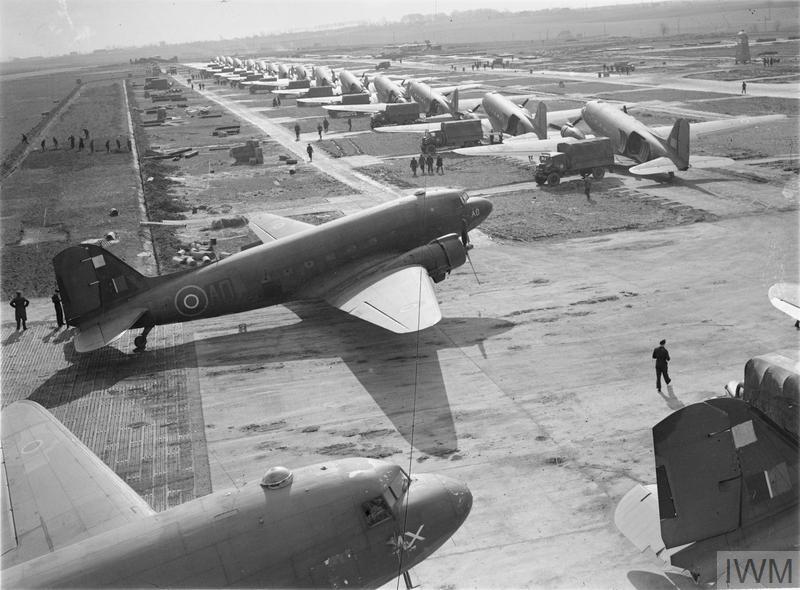
After a quiet week owing to poor weather, FZ681 was airborne again on 21st as one of four aircraft taking RAF freight to Nivelles under the control of PO Warburton. 22nd February saw Flt.Lt Priestley piloting FZ681 from Blakehill to Nivelles with a cargo of parachutes and drop tanks before returning to Netheravon with troops. A second flight to the Continent was made in the afternoon, empty, in order to return to Blakehill Farm with more troops. Flt. Lt A.Cody’s crew took FZ681 to Nivelles as part of a nine-aircraft mission on February 23rd. They delivered panniers and parachutes and returned with soldiers of the 6th Airborne. The following day saw a very similar operation with Flt.Lt Priestley flying FZ681 as one of ten Dakotas on a first mission taking troops, parachutes and panniers to Nivelles, returning with paratroopers. A second lift was run with seven aircraft to collect a further 140 troops. Another newly-arrived crew, commanded by PO Warburton, flew FZ681 to Nivelles and also returned with troops having been part of a ten-aircraft lift of mixed army freight on the outbound sector. FZ681’s last February flight was on 27th when Flt.Lt Priestley took-off from Blakehill at 11:22 with army freight en route to Nivelles. Seven passengers were returned to Hartford Bridge (as Blackbushe was then known).
The airfields around Brussels and further north into Holland continued to figure predominantly in the Squadron’s operations during March as the Rhine Crossing was planned. Flt.Lt Priestley is recorded as picking-up the New Zealand rugby team from Northolt on the morning of March 2nd (1) to carry them to Paris via A54/ Paris Le Bourget. They were back at Blakehill by 12:53. Flying Officer Hall was at the controls when, on March 6th, FZ681 and KG437 flew 40 Canadian troops to B56/ Brussels Evere. The following day, Brussels was again the destination for Flt.Lt Priestley who, with another aircraft, delivered Spitfire drop tanks to B56. The same crew took-off at 07:48 on March 9th bound for A93/ Liege with 5000 lbs of medicines on board. The next day it was FO Hall’s crew who transported 5000 lbs of spares to A54 before returning to base empty. For the next three days, Flt. Lt Priestley and his crew flew a series of missions to Brussels Nivelels and Evere. On 11th February, FZ681 lifted at 08:45 with 5000 lbs of steel tracking for B56 before returning to Northolt with 20 passengers. The following day, FZ681 was one of twelve Dakotas carrying army freight to B75. The final mission prior to a day’s glider training was completed on 13th March when FZ681 and nine other aircraft carried army freight to B75/ Nivelles before collecting 233 Squadron ‘B’ flight personnel to transfer them back to Blakehill Farm.
(1) The Squadron Records appear to log Flt.Lt Cody taking 20 passengers from Northolt to B78/ Eindhoven in FZ681 on March 1st before night-stopping at B56/ Brussels-Evere. The following day, the route was reversed, carrying 20 passengers from Eindhoven to Northolt. This puts Flt.Lt Cody back at Blakehill at 14:55 on March 2nd. However, the entry for FZ681 on March 2nd has Flt.Lt Priestley departing Blakehill Farm at 10:35 in FZ681. It seems likely that Flt.Lt Cody was in a different Dakota.
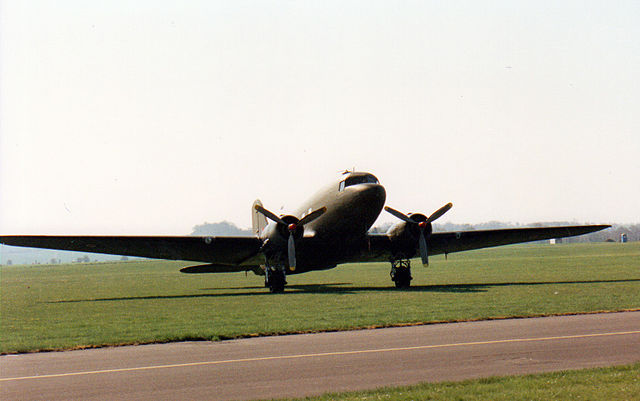
The Squadron had carried-out extensive training prior to Operation Varsity during late February and early March. Cross-country and day/ night formation flying had been undertaken on February 27th and between March 4th and 8th. Glider towing had been practiced on March 11th and container/ pannier drops on March 8th, 12th. Further cross-country and paratrooper dropping exercises followed on 15th to 22nd.
FZ681 was involved in the mass glider towing exercises on March 14th before returning to normal operations with a flight carrying freight from Perranporth to B56/ Evere on 15th with PO A.J.Green at the controls. 18th March was the last day of regular operations before 233 Squadron moved into briefing and preparations for Operation Varsity, the Rhine Crossing. Pilot Officer Morrison flew the Dakota to Ford to collect army personnel destined for B75/ Nivelles. The flight continued to B71/ Coxyde to deliver a starter motor and pick-up four passengers for Blakehill Farm.
On March 21st, twenty-six 233 Squadron Dakotas flew from their Blakehill Farm base to Birch airfield in Essex. The next two days were spent preparing and briefing for the airborne operation on March 24th. Twenty-four aircraft were linked-up to their Horsa gliders on the morning of 24th and take-offs began at 06:18 with all aircraft airborne by 06:49. FZ681 was flown by Flt.Lt Priestley with the regular crew comprising second pilot Flt.Sgt J.Bright, Navigator Flt.Lt Taylor and Wireless Operator Flt.Sgt D.G.Morris. The gliders were successfully released close to Wessel between 10:17 and 10:21 and, despite some flak, the greatest danger reported by the Squadron was the vast number of aircraft manoeuvring close to the target zones. Nonetheless, twenty-three of 233’s Dakotas successfully made it to land at B75/ Nivelles between 10:55 and 11:41. The 24th Dakota landed at B64/ Diest-Schaffen owing to low fuel. FZ681 refuelled at Nivelles and then, with 19 others, adjourned to Blakehill Farm. Four Dakotas remained at Nivelles for a couple of days awaiting a resupply mission which was eventually cancelled.
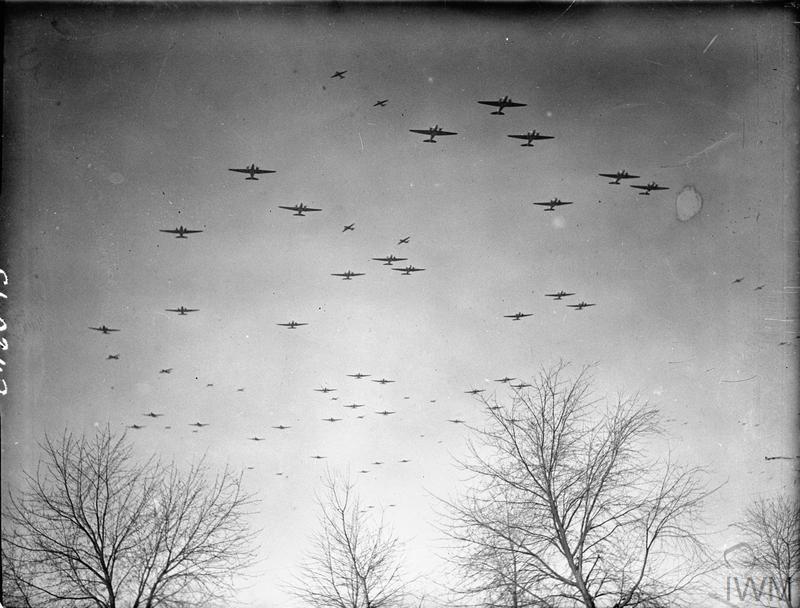
Supply missions were flown by FZ681 on 26th and 30th March. PO Mills carried cluster bombs to Nivelles on 26th, continuing to B56/ Evere to pick-up casualties bound for Blakehill Farm. Drop tanks were flown to B65/ Maldegem on 30th before FZ681 and a second aircraft proceeded to B78/ Eindhoven to collect 44 glider pilots destined for Down Ampney.
April was the last full month of the war in Europe and, as the Allies moved into Germany, 233 Squadron’s outbound loads increasingly delivered petrol and spares with repatriated ex-POWs traveling on the return. FZ681 remained a part of ‘A’ flight and followed the general trend. On April 2nd, FO Ball flew ‘KG681’ (almost certainly FZ681) from Warmwell in Dorset to Eindhoven as part of an eight-aircraft operation carrying 120 passengers. Continuing empty to B80/ Volkel, the Dakotas returned to Warmwell with 133 passengers. The following day, FZ681 was part of a 10-aircraft operation which, again, collected passengers from the grass-runway airfield at Warmwell. 122 passengers were conveyed to B100/ Goch (latterly RAF Laarbruch) just inside the borders of Germany. On the return leg to Warmwell, 233 Squadron Dakotas carried 130 passengers from the Canadian Spitfire XVI 443 Squadron. FZ681 was carrying personnel again on April 4th with Sgt Neal in command as part of a 2-aircraft mission from Hunsdon to Eindhoven with 29 passengers shared between the two Dakotas on the way out, 26 on the return.
Warrant Officer Evered flew FZ681 on a couple of flights delivering spares on 5th and 6th April. Three Dakotas were involved on the flight to A54/ Le Bourget on 5th and FZ681 was one of four aircraft flying to B75/ Nivelles the following day. Flt.Lt Priestley was back at the controls for a 3-aircraft mission to Nivelles carrying spares on 7th April and PO Morrison also flew a cargo of spares to B75 in FZ681 as part of a 4-aircraft operation on April 12th. The return flight was via Y30/ Le Havre-Octeville where ex-POWs were collected for transport to RAF Wing, one of the British airfields designated as a reception centre. This became the regular return run for 233 Squadron aircraft during April. Flt.Lt Bentley piloted FZ681 as part of an eleven-aircraft mission uplifting petrol from Greenham Common on 11th April and, after delivering fuel to Y87/ Nidda (Germany), returned via Y30/ Le Havre where eight aircraft picked-up ex-POWs destined for Westcott.
Flt.Lt Priestley was the Captain of FZ681 again on 13th and 14th April, both flights carrying petrol on the outbound sector. The first flight was as part of a ten-aircraft mission delivering fuel to B108/ Rheine before flying on to B56/ Brussels to uplift steel matting for B116/ Wunstorf. The second of the flights saw FZ681 as part of a brace of Dakotas flying 10, 166 lbs of petrol from Greenham Common to R13/ Hessich-Lichtenau before continuing empty to Y82/ Kirchellen to uplift 33 ex-POWs for the flight back to Wing via B56/ Brussels.
WO Evered also carried petrol on FZ681 on 15th April when three Dakotas took 15,000 lbs of fuel to B108/ Rheine. The aircraft then transported forty Belgian ex-POWs to B56/ Brussels. A further payload of petrol was then carried from B56 to Rheine before the Dakotas returned to base via a stop in Brussels, ironically to refuel. Flt.Lt Cheany lifted-off from Blakehill Farm in FZ681 at 08:59 on April 16th with 5016 lbs of petrol for B118/ Celle, returned empty to B56/ Brussels-Evere to collect another 5006 lbs for Celle then flew on empty to R16/ Hildesheim. Here the Dakota collected ex-POWs for transport back to Wing. FO Smith’s crew took FZ681 on a similar mission the following day: 5016 lbs petrol were carried to Celle before a return to Brussels to collect more fuel for delivery to another Advanced Landing Ground. FZ681 then flew on to B114/ Diepholz to collect 32 ex-POWs for B56. Thirty ex-POWs were then ferried to westcott before the crew returned to base. Flt.Lt Priestley’s mission was much the same on 20th April: 5016 lbs petrol to B150/ Hustedt, back to B100/ Goch to collect fuel, on to B114/ Diepholz, then back to Goch for two ammunition lifts to Diepholz and, finally, the transport of 24 ex-POWs back to Wing.
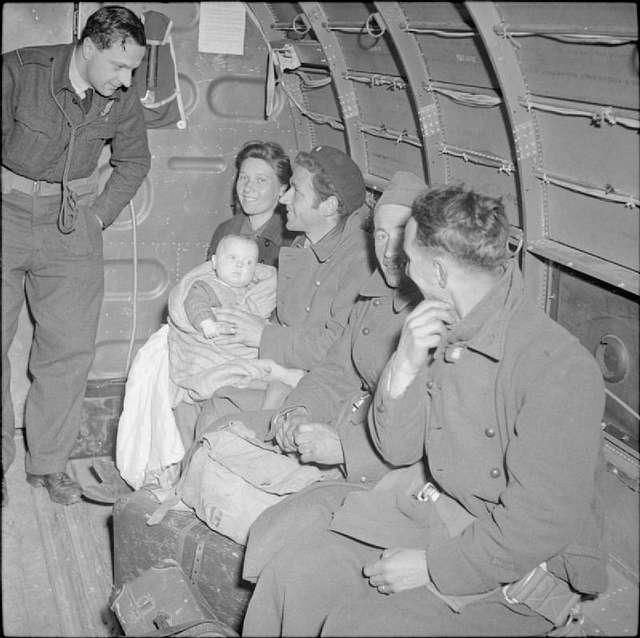
FZ681 continued with the multi-leg missions on 22nd April with Flt.Lt Mulder taking part in a 6-aircraft operation. Petrol was delivered to Diepholz again, ex-POWs were returned to B77/ Gilze-Rijen and the aircraft flew on empty to B100/ Goch-Laarbruch. From here, the Dakotas carried ammunition to B114/ Diepholz and returned to Wing with ex-POWs. Still not complete, the six Dakotas returned to R16/ Hildesheim to collect further ex-POWs for Wing. Flt.Lt Priestley was in command on 23rd April when FZ681 delivered petrol to B118/ Celle, flew on to R35/ Volkenrode empty before being directed to R37/ Brunswick. A complement of ex-POWs was then transferred to Wing. On the last day of the month, FO Hall lifted -off from Blakehill at 07:10 carrying another load of petrol for B110/ Acher.
The following month maintained the pattern with Flt.Lt Green carrying petrol to Celle on May 2nd, positioning to R16/ Hildesheim and then transferring 30 ex-POWs back to RAF Wing. These multi-destination operations often took two days. On May 3rd, Flt Lt Priestley lifted-off from Blakehill in FZ681 with petrol destined for continental Europe via B75/ Nivelles, carried ex-POWs back to Brussels before uplifting kerosene to forward airfields and returning to Wing with more ex-POWs. A similar multifunction flight was operated over 5th/ 6th May with petrol and blankets shipped to continental destinations and two loads of ex-POWs repatriated, one group to Brussels and one to Wing. FO Menzies’ crew took FZ681 on a similar two-day outing on 7th/ 8th May to deliver petrol and freight on outbound sectors and ex-POWs to Brussels and Wing on the return.
Operations to newly-liberated Scandinavia began in mid-May and, on 9th, Squadron Leader Blythe flew FZ681 to Copenhagen with 4000 lbs of freight. The return flight called at Field Marshall Montgomery’s new operational centre of Luneburg to collect ex-POWs destined for Dunsfold. Flt. Lt Priestley flew FZ681 on a multi-leg mission on May 10th delivering freight to B114/ Diepholz and B156/ Luneburg and carrying two loads of ex-POWs to B56/ Brussels-Evere. A similar mission was run by FZ681 captained by Flt.Lt Maas on May 12th: food was carried to B90/ Kleine Brogel followed by a return to Brussels to collect tyres for delivery to Celle. The aircraft then flew to B158/ Lubeck to collect ex-POWs destined for B56/ Brussels before returning to Dunsfold with a further complement of ex-POWs. The May 14th mission flown by Flt.Lt Priestley in FZ681 collected three 33-strong contingents of ex-POWs from the Continent for return to Dunsfold and Wing.
On a May 15th/ 16th mission, FZ681 flown by FO Smith, carried petrol to B166/ Flensburg. The final cabinet of the Nazi government, headed by Admiral Donitz, had located to Flensburg on May 3rd and remained in place between the May 8th capitulation and May 23rd, latterly under control of the Allies. FZ681 then flew on to B156/ Luneburg, empty to Celle and then on to B160/ Copenhagen with petrol.
The crew which had flown FZ681 on the fateful September 23rd Arnhem mission returned to fly the aircraft on May 18th: FO Barry Stableford, PO Terry Holmes and WO Hastings were joined by FO Brum as second pilot for a flight carrying a jeep and three passengers to B156/ Luneburg. Hopping to B158/ Lubeck, the crew overnighted before returning to Netheravon the following day with six VIP passengers.
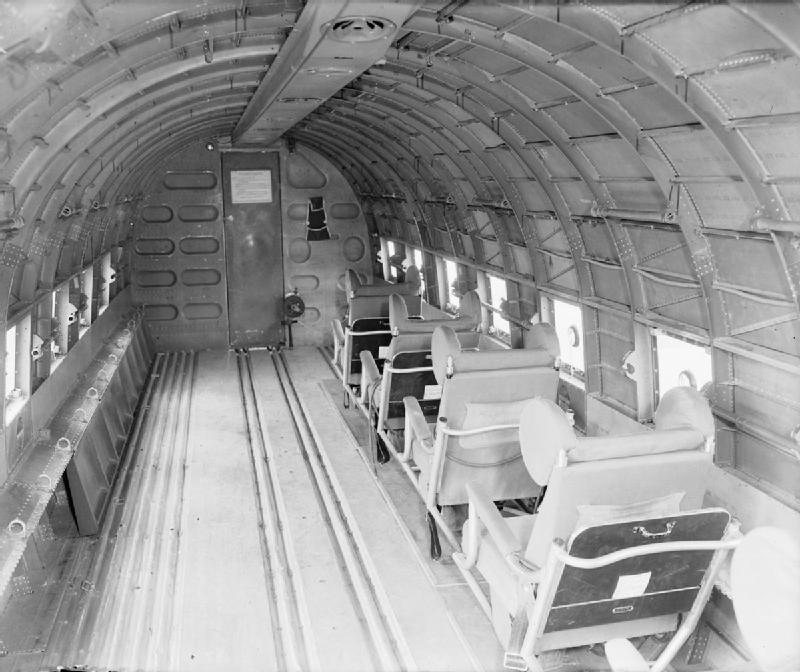
On May 20th, PO Diamond flew 5016 lbs of petrol to Luneburg before returning twenty Sixth Airborne troops to B58/ Melsbroek and then taking twenty troops to Netheravon. The general freight and passenger routine continued for a busy end to the month:
24th/ 25th May: Flt Lt Priestley captained FZ681 empty from Blakehill to B75/ Nivelles, took freight on to B154/ Reinsehlen, on to B156/ Luneburg empty, then ex-POWs to Brussels. A second group of ex-POWs was then flown back to Dunsfold.
26th May: Flt.Sgt Morrison’s crew took FZ681 to Gatwick to collect freight for B118/ Celle. Continuing empty to B56/ Brussels, 32 ex-POWs were collected for the return flight to Dunsfold.
27th May: To B156/ Luneburg with4492 lbs freight, on to B56/ Brussels with 23 casualties and then to Croydon with 15 passengers.
28th May: Flt.Lt Priestley flew FZ681 to B56/ Brussels-Evere before uplifting 4600 lbs of freight to B154/ Reinsehlen, flying empty to Luneburg. Thirteen ex-POWs were flown to B56/ Brussels and thirty ex-POWs flown home to Dunsfold.
29th May: FO Stableford took off from Blakehill at 06:10 en route to Boreham in Essex to collect 4600 lbs of freight bound for Copenhagen. The next leg, to B156/ Luneburg, was flown empty and 28 Displaced Persons picked-up for transport to B56/ Evere. Thirty ex-POWs were then returned to Dunsfold.
30th May: FO Ridley flew empty to B56, collected stores for B118/ Celle and then travelled empty to B156/ Luneburg to collect 30 ex-POWs bound for Brussels. Empty to Blakehill Farm.
31st May: FO Mills crew positioned FZ681 empty to boreham in order to pick-up 16 passengers (for Jersey? the log is illegible). The return flight conveyed 10 passengers to Down Ampney.

June 1945 appears to have been FZ681’s last month with 233 Squadron. Many of the Record of Events entries are hard to read – the Squadron Intelligence Officer apparently needed a new typewriter ribbon!
On June 1st, Wing Commander Mellor took a break from his regular Dakota, KG313, for an 08:45 lift to Croydon where passengers were collected for Brussels. Passengers were then flown to another Continental destination before a return to base was made via Croydon. June 2nd saw FO Carter taking high octane fuel on a three-leg delivery to the Continent.
June 7th was 233 Squadron’s last full day at Blakehill Farm before the move to Odiham in Hampshire which was in full swing by the following day. FZ681 made three taxi flights to Odiham on June 8th carrying, firstly, flight equipment, subsequently office equipment and, finally, 20 flight personnel. On June 9th, FZ681 seems to have flown her final mission from Blakehill, heading to Croydon to uplift 20 passengers and kit for B116/ Wunstorf. The return flight with 21 passengers for Croydon continued to the new Squadron base at Odiham.
June 13th involved FZ681 flying empty to the Continent to carry troops and kit on two flights to Blackbushe. The following day Flt.Lt Priestley’s crew was on a similar mission: FZ681 positioned to Northolt, collecting passengers and spare parts for B168/ Hamburg. Passengers were carried from B168 to B61/ Sint Denijs before another passenger flight back to Northolt and Blackbushe.
On June 15th WO Wood flew FZ681 with a group of SHAEF personnel from Hendon to the Continent.
June 16th saw Flt.Lt Priestley back in the cockpit flying FZ681 empty to Greenham Common where boiler pipes were loaded for delivery to B58/ Brussels-Melsbroek. Equipment was carried on the return leg to Greenham before the Dakota positioned to Down Ampney to collect a cargo of (what appears to be) dubbin. The next sector was to Melsbroek again to collect parachutes and chains for Broadwell. The same crew were back in FZ681 on 18th June carrying passengers and freight from Ibsley to Oslo before returning to Northolt with 17 passengers and kit.
FZ681 doesn’t feature in the operational logs after late June 1945 and seems to have moved to a conversion function for #10 Squadron RAF, a former Bomber Command Halifax squadron which had been switched to transport Command in May. FZ681 and fellow 233 Squadron Dakota KG561 are credited with flying for #10 Squadron (2) and may have been allocated to them at 1336 (Transport Support) Conversion Unit which was established at Welford on June 20th 1945 (3), (4). 1336 TCU also briefly operated ex-233 Squadron Dakotas KG351, KG440 and KG447 as well as redundant aircraft from 48, 271, 512 and 575 Dakota squadrons.
(2) www.rafweb.org
(3) Air Britain’s DC-1/ DC-2/ DC-3: The first 70 years by Jennifer Gradidge.
Civilian Career
In the late summer of 1945, a batch of 233 Squadron Dakotas had transferred the Squadron to India and then returned to Britain carrying the two Canadian Squadrons initially established in India, 435 & 436. FZ681 did not participate in this airlift and, as related above, transferred to 10 Squadron/ 1336 TCU at Welford as from 19th August 1945. 1336 had been set-up on 30th June specifically to cater for squadrons due to be assigned to Transport Command. 10 Squadron commenced switching to Transport Command in May 1945 prior to heading for India with its own batch of Dakotas in October. As 10 Squadron arrived at Broadwell in August 1945, it is possible that the Dakotas transferred from 233 Squadron remained at the Cotswold airfields although, alternatively, they might have moved to Welford, Berkshire (1).
By the start of 1946, the conversion task must have been largely completed and many Dakotas moved to RAF Maintenance Units for storage and, ultimately, disposal. FZ681, however, was transferred into the new state airline system, initially via the British Overseas Airways Corporation. BOAC had been created at the start of WW2 by the amalgamation of Imperial Airways and the, then, private company, British Airways. Imperial Airways also had a stake in the British domestic airline market via Railway Air Services, a company it had created along with the four large private rail operators. FZ681 was delivered to BOAC at Croydon on 28th January 1946 with 1289 hours flying time. A major overhaul was completed by Marshalls of Cambridge and a Check III inspection undertaken. The aircraft was registered G-AGYZ on February 6th and a Certificate of Airworthiness issued on March 15th. The ownership details on the registration document had been amended from BOAC to Railway Air Services with a total time of 1293 hours and the first service is reported as being operated on 25th May 1946 (1A). The domestic airline had received 24 Dakotas from BOAC but was suffering from a lack of spares which meant that up to 25% of the fleet could be grounded at any one time. Indeed, by the time BEA was fully operational in 1947, four of the ex-BOAC aircraft had been cannibalised for spares, three at Speke and one at Northolt. The remaining Dakotas operated in May 1946 with a 20-seat configuration on key routes such as Glasgow (Renfrew) to London.
(1) Air Britain ‘DC-3, the First 70 years’, Jennifer Gradidge.
(1A) John Stroud (Air Pictorial, August 1984) gives 20th May 1946 as the date Railway Air Services started Dakota services with G-AGYZ on the Glasgow to London run and G-AGZA on the Glasgow to Belfast route.
The UK election of July 1945 returned a Labour government with a manifesto which included airline nationalisation by August 1946. Railway Air Services (and the other 20 or so civilian operators which had been amalgamated into the wartime Associated Airways Joint Committee) were to become British European Airways as from 31st January 1947. In the interim, the AAJC airlines continued to operate on behalf of BEA and the London Northolt to Renfrew services were flown by Railway Air Services Dakotas crewed by Scottish Airways personnel. the route had previously been operated using DH86s and the new, larger-capacity aircraft led to a fare reduction of two pounds. By late 1946, G-AGYZ was operating in the Railway Air Services colours with the new BEA ‘Speed Key’ symbol on the tail and the registration in huge letters above the aft cheat line.
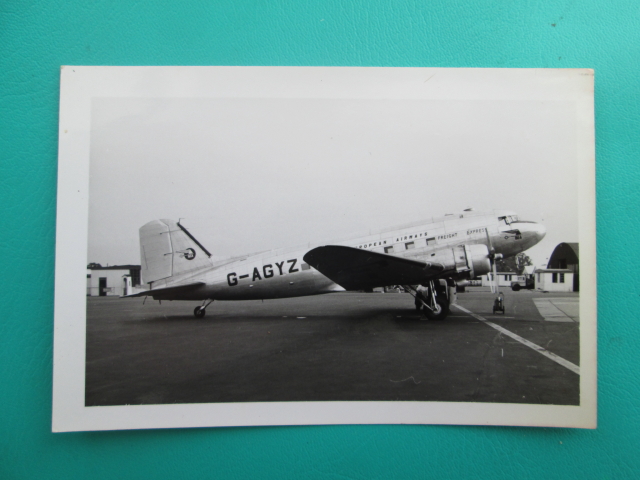
1947:
On 31st January 1947, BEA took over all aircraft, routes and staff of Railway Air Services and the other AAJC airlines. G-AGYZ flew the first domestic air route of the new airline on 1st February 1947, departing Northolt at 13:25 and arriving at Renfrew at 16:00 having managed a brief stop at Prestwick en route. The Captain was John ‘Joe’ Ramsden, previously of Scottish Airways, who later survived the April 1948 crash of BEA Viking G-AIVE on Irish Law, Renfrewshire. The inaugural flight was celebrated with a party in Glasgow’s Central Hotel that night.
G-AGYZ was a regular part of the BEA fleet and, despite the passenger configuration employed on February 1st, had been switched to cargo mode when she inaugurated the airline’s first all-freight schedule with the August 10th 1947 service from Northolt to Brussels. Freight routes to Europe were expanded on a very conservative basis with a Northolt to Malta via Nice and Rome service added in April 1949 (2) and schedules to Paris and Hanover in Spring 1950. G-AGYZ’s British European Airways titles were complemented with a ‘Freight Express’ logo and, during the early 1950s, by the fleet name ‘Sir Charles Kingsford-Smith’ (3). Other ad hoc freight missions were operated to a variety of destinations. Typical of these were the ‘lobster flights’ operated from the Hebrides to France such as the one which departed Renfrew on November 24th 1949 for the short hop to Stornoway where the crustaceans were loaded. After overnighting in the Hebrides, ‘YZ departed for Liverpool/ Speke where she was refuelled prior to heading for the Brittany airfield of Ploujean, close to Morlaix. This long-established airfield had been upgraded by the Luftwaffe during WW2 and, subsequently, taken over by the USAAF as ALG A51 in September 1944. It had remained in use for only a couple of months and, by 1949, gorse bushes had encroached on the runways and many bomb and shell craters remained unfilled. Being rather short of airport data, the Dakota Captain opted for a low pass before committing to landing. Once on the ground, G-AGYZ’s crew found that formalities were simplified by the lack of customs, immigration or airport staff. The agent for the lobsters provided a camionette and, following unloading, the Dakota departed for an overnight stop in Jersey en route to Northolt (4).
(2) G-AGYZ was logged in Malta on 31st December 1948 prior to official inauguration of the regular schedule: www.aviationinmalta.com
(3) BEA details from: ‘Glasgow’s Airport’ by Dugald Cameron, pub by Holmes McDougal 1990; ‘History of British European Airways 1946-1972’ by Charles Woodley; ‘Flight from the Croft’ by Bill Innes, Whittle Publishing.
(4) from ‘Bealine to the Islands’ by Iain Hutchinson and Phil Lo Bao, Pub Keats 2002.
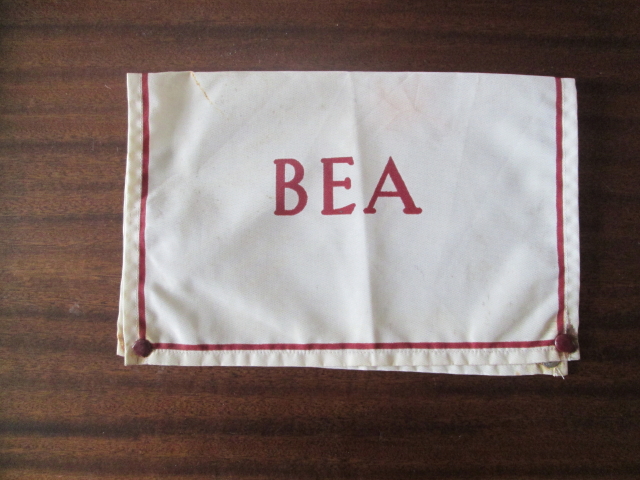
From November 1950, Scottish Aviation were contracted to upgrade BEA’s Dakotas to a 32-seat ‘Pionair’ configuration incorporating contemporary avionics, modern seating and a rudimentary galley. Thirty-eight aircraft were due to be modified at Scottish Aviation’s Prestwick base on a rolling schedule. A further ten Dakotas were to be modified to the ‘Pionair Leopard’ freight specification which retained the double cargo doors but benefited from upgraded communications and avionics equipment. Field Aircraft at Tollerton performed the electronics upgrade (5).
(5) Scottish Aviation Pionair upgrade information from article in Flight International.

In the interim, G-AGYZ suffered damage following an undercarriage collapse while at Hanover on May 3rd 1952. Flown to BEA’s Renfrew maintenance base on May 27th, fairly major repair work ensured that the Dakota was back in service by June 27th 1952. the following year, ‘YZ transited to Tollerton for her upgrade to Pionair Leopard status . The work was completed by July 23rd and G-AGYZ re-commenced BEA flying the following day with a recorded Total Time of 10,903 hours. By 1953, BEA was using Viscounts on some of the longer freight routes and started to phase-out some of their Dakota fleet. G-AGYZ completed her BEA service on March 3rd 1954 with total flying hours recorded as 11,966. Widely-reported as sold to H.C.Phillips, the Dakota departed Renfrew on 25th March 1954 en route to Blackbushe and the ownership of Eagle Aircraft Services. Officially registered to Eagle on 29th March, G-AGYZ was upgraded by them to a Dakota 4 before returning to the air with Airwork Ltd on May 6th 1954.

Officially registered to Airwork on 14th May 1954 (6), the Dakota was noted in Malta on August 28th 1954 (2). She was also regularly logged at Blackbushe with the airline (7) : 18/6/55, 10/7/55, 3/4/56, 7/4/56, 19/4/56 and 27/5/56. Airwork converted the aircraft from the freight configuration to a 32-seat passenger between 7th May and 29th June 1956 prior to a lease to Skyways for July and August 1956. During this period, G-AGYZ was employed on the newly-established Coach Air service between Lympne supplementing two of Skyways’ own Dakotas. When returned to Airwork on 29th August 1956, the Total Time was recorded as 13,619 hours. Only a further three hours of flying elapsed before G-AGYZ departed on lease to East African Airways on 6th September 1956. The Dakota returned to Airwork in the UK on March 4th 1957 having flown 457 hours with EAA.
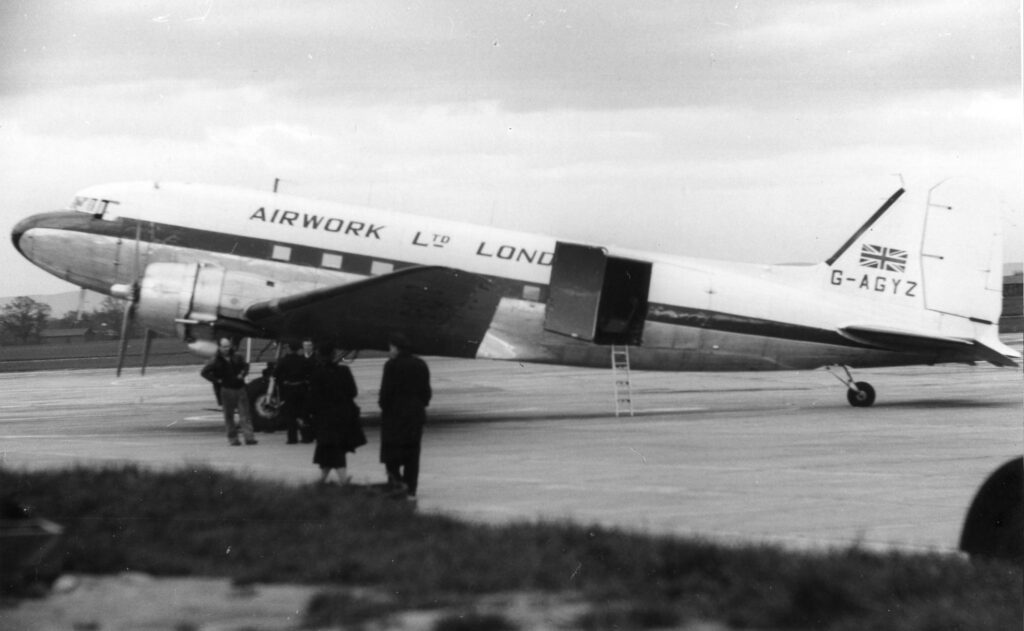
Skyways must have been happy with G-AGYZ’s earlier lease because they purchased the aircraft from Airwork on 9th March 1957. In order to maximise the Coach Air benefits, Skyways converted ‘YZ to a 36-seat configuration at Blackpool Squires Gate on 6th April 1957. Flying time was recorded as 14,081 hours.
(6) Data from CAA website G-Info.
(7) Information from www.blackbusheairport.proboards.com.
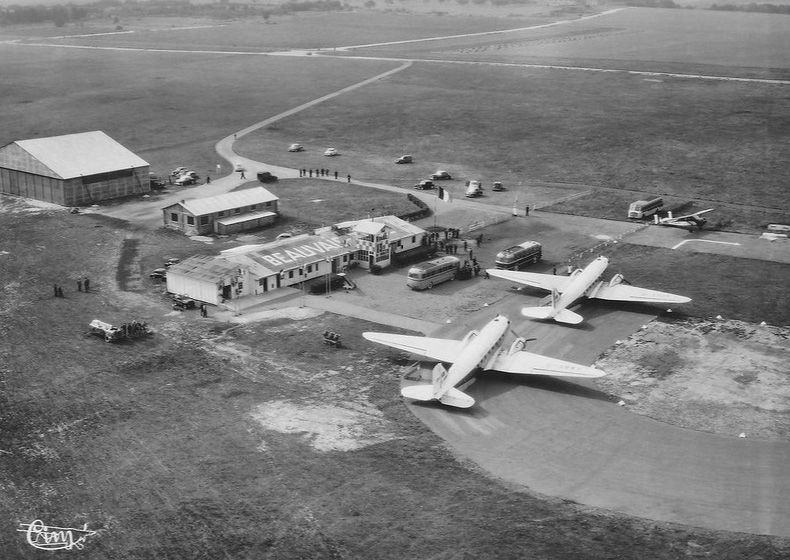
THE SKYWAYS YEARS – The turbulent early history of Skyways:
Skyways had a long and distinguished history with an initial formation in 1929 but no start to commercial operations until 1946. oil company mixed passenger/ freight flights from the UK to Iraq were an early speciality as were tourist charters organised by Sir Henry Lunn (8). In late 1946, the airline bought the airfield at Dunsfold and, during the following year, expanded their long-distance charters to Palestine, Hong Kong, Shanghai, Thailand and Dar-es-Salaam. Skyways played a big part in the civilian part of the 1948 Berlin Airlift and also operated services in various overseas countries ranging from Thailand to Kenya. In addition to long-range Avro Yorks, Lancastrians and DC-4s, Skyways operated a number of Dakotas on operations in the Middle East and and Indian Ocean Africa. Despite being a large-scale operation, Skyways began to run out of work for the long-distance fleet and, in March 1950, went into a brief spell of liquidation. Re-emerging shortly with a fleet of six Dakotas, much of 1951 was spent operating overseas contracts. The remaining fleet was sold in 1952.
The next iteration of Skyways followed a couple of months later when the management behind the Lancashire Aircraft Corporation, Eric Rylands and David Brown, bought the airline’s remaining assets. LAC had been a competitor on the long-range trooping flights and the ‘new’ Skyways was allocated LAC’s fleet of Avro Yorks. Suitably repainted and moved to an operating base at Bovingdon, they carried-out trooping flights to the Caribbean and Suez Canal zone as well as ad hoc charters around Europe. Civilian passenger charters were also operated and the airline had ambitions to fly long-distance coach air services to Rhodesia and Cyprus. Stansted became their operating base but Skyways also applied for licenses to fly between Lympne in Kent and Beauvais, France, and Ghent in Belgium. These low cost, high density routes would become the basis for the airline’s Dakota operations for the next 20+ years and represented a split between the shorter Coach Air and longer range services.
In common with Airwork and Hunting, the mid-fifties Skyways had a large shareholding acquired by a shipping line. In March 1955, Bibby Line bought a major shareholding in Skyways. British Aviation Services bought out Lancashire the following year but Skyways was not part of the deal. Eric Rylands continued as director of Skyways but, along with his fellow LAC director David Brown, his interests appear to have been directed towards the Bahamas. Skyways’ Bahamas company was bolstered by the purchase of an 80% interest in Bahamas AIrways in 1959. Initially, a Heron and a Dakota operation, Skyways (Bahamas) added a couple of the parent company’s Handley Page Hermes in order to operate large capacity flights between the Islands and Florida. This was not a success and, by 1961, the large airliners had returned to the UK and Bahamas Airways operations had returned to BOAC. Eric Rylands retained confidence in Skyways and, by September 1961, had purchased the Bibby Line shares and rearranged the various constituent companies under a holding company, Eric Rylands Ltd. Flying in 1961 was carried-out by four Yorks and four Constellations with the Hermes leased-out. Much of the revenue came from a contract to fly scheduled freight services on behalf of BOAC between the UK and the Far East. When this came to an end, Skyways was short of work for its three Constellations just as another British operator of the type, Euravia, was seeking to expand its fleet. Skyways assets were sold to Euravia on September 1st 1962 and the Connies absorbed into their fleet. The Yorks continued flying freight on behalf of BOAC and Pan American until mid-1963.
Skyways Coach Air and Skyways Engineering (formerly Salmesbury Engineering) remained under Eric Rylands’ control and he also retained the rights to the name ‘Air Freight Limited’. An airline with the name ‘Air Freight’ had been formed in 1946 with two Halifaxes but had quickly been absorbed into Harold Bamberg’s Eagle Aviation. In 1953, Eagle had sold their fleet of Avro Yorks to Eric Rylands’ Lancashire Aircraft Corporation for operation by Skyways and the Air Freight company presumably went with them (8).
(8) Much of the Skyways information is from Tony Merton-Jones book ‘British Independent Airlines 1946-76’.
G-AGYZ and Skyways.
G-AGYZ did operate as part of the fleet during ‘Skyways of London’ days but was part of the Coach Air concept conceived by Eric Rylands. The story of Rylands’ Lancashire Aircraft Corporation is detailed in the thread on G-AMWV. As noted above, he and Aston Martin founder David Brown had bought Skyways of London in 1952 and amalgamated the two airlines’ Avro York fleets. However, LAC also had a large number of smaller aircraft and a limited Dakota fleet. Eric Rylands’ Coach Air plans were formulated in 1953 and licenses to fly between Lympne and Beauvais and Brussels were applied for in 1954. Once granted in Spring 1955, Rylands brought in LAC Dakotas G-ANAE and G-AMWV to fly the first service to Beauvais on September 26th 1955. The quieter autumn period then saw the service maintained with just one DC-3. However, with the 1956 summer season, there was greater demand assured and Skyways operated two of their own Dakotas and leased G-AGYZ from Airwork during July and August. By the end of 1956, the Skyways Coach Air Dakota fleet comprised G-AMSM, G-AMWW and G-AMWX. Passengers from London to Paris would board and East Kent coach at Victoria Coach Station for the drive to Lympne. Following the short flight to Beauvais, a second coach would deliver the travelers to the Moderne Palace Hotel in Paris. The 1957 season started well and the Dakotas operated sixteen return flights per day (9) on the Paris service. A similar scheme was proposed for flights to Nice with, strangely, Lyon as the French terminus – perhaps a forerunner of today’s Ryanair business plan. The Nice service was not commenced until 1958 but a new route between Lympne and the pilgrim-destination of Lourdes was initiated. Further aircraft capacity was needed and G-AGYZ was purchased from Airwork in March 1957. During April ’57 Skyways converted the 32-seat G-AGYZ to a 36-seat configuration at Skyways Engineering’s Blackpool base. The Dakota joined Skyways at Lympne operating the busy daily schedules to Beauvais along with the weekly flight to Lourdes.
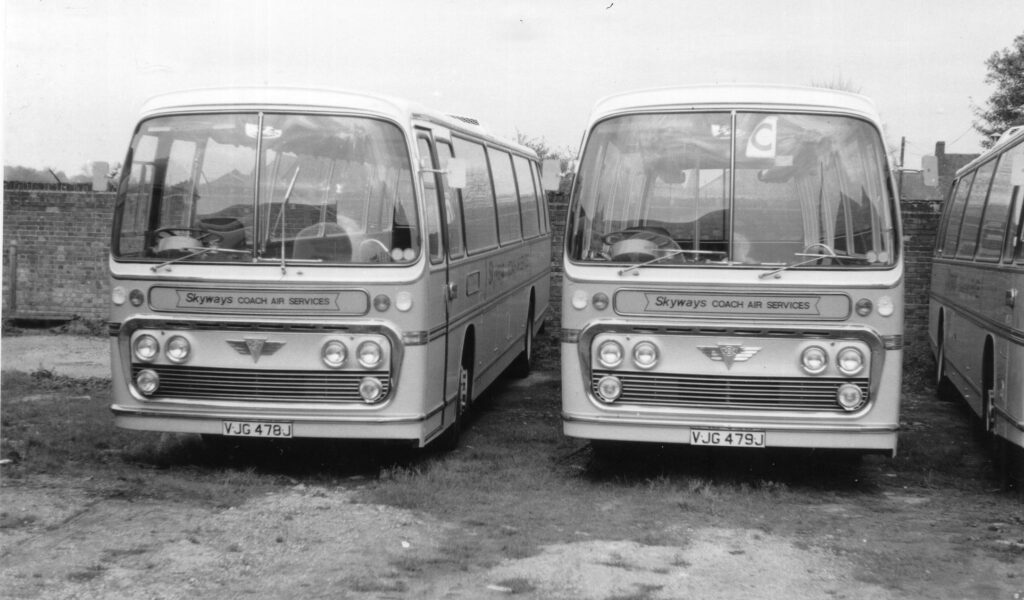
In 1958, the route from Lympne to Brussels was added as from April 17th with Antwerp chosen as the Belgian end of the air service. This flight was operated twice per day and coincided with the Brussels Expo 58 World Fair which ran from the flight inauguration day until October. It would later become a foundation flight for the airline’s freight services. A coach air service was also added to Montpelier in May 1958 and further licenses added for further french destinations at Tours, Frejus and Dijon. The coach air concept was clearly proving successful and a separate company, Skyways Coach Air, was registered in October 1958. While other aspects of Skyways worldwide operations were proving challenging, Coach Air’s four-strong Dakota fleet persevered on the routes from Lympne with occasional charters flown to French destinations from Gatwick. To add fleet flexibility, G-AGYZ was converted to passenger/ freight configuration by Skyways at Stansted at the end of April 1959. She had flown 15,434 hours.
Lympne’s grass runways had proved inadequate for Silver City’s Bristol Freighter operations in the early 1950s when the airfield was temporarily operated by the Ministry of Civil Aviation. Heavy rain had led to the car ferry flights being briefly switched to West Malling and, also, across the river to Southend. The same problem afflicted Skyways when they took over Lympne on a long term lease from the owner, J.M.Beecham. Eric Rylands later purchased the airfield, adding further land from adjacent farms. This didn’t remove the water-logging problem and even the resilient Dakotas sometimes had to switch to Gatwick. Any replacement of Skyways’ existing fleet was clearly going to have to address the issue of the grass runways.
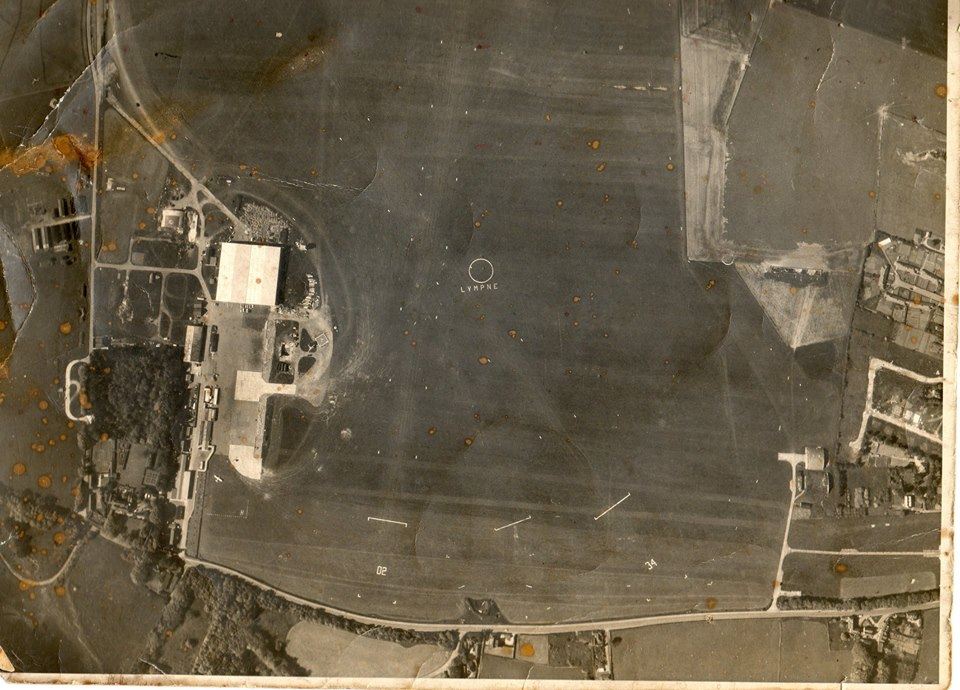
1961 proved to be a year of change: Skyways international operations were failing and, in September 1961, it was stated that a separate holding company, Eric Rylands Ltd, would be created and would purchase the Bibby Line shareholding held in Skyways as well as Skyways Coach Air and Skyways Engineering. This move had been on the cards since 1960 along with plans to phase out the Dakotas in favour of Hawker Siddeley HS748s. A contract to purchase three 748s was signed in May 1961 with the likelihood that Skyways would become the first commercial operator of the turboprop.
Although the first 748 visited Lympne extensively during autumn 1961 while the certification programme took place, it was only delivered for commercial operations the following Spring. G-ARMV operated its first service on 17th April 1962 and was joined by a second 748 in time for the busy summer season. It would be another year before delivery of the third HS748 and, in the meantime, Skyways had successfully applied to operated inclusive tour flights from Lympne to Basle, Barcelona, Palma, Perpignan and Pisa, Luxembourg, Lyon and Venice. this kept the entire fleet of DC-3 and 748s busy and the 1961 season also saw the lease of three further C-47As from Autair. Skyways had also applied for a license for a twice-daily cargo schedule between Lympne and Beauvais and, to this end, G-AGYZ and G-AMWW were withdrawn from passenger service in November 1962 and converted to an all-freight configuration at Lympne. G-AGYZ had flown 18.845 hours.
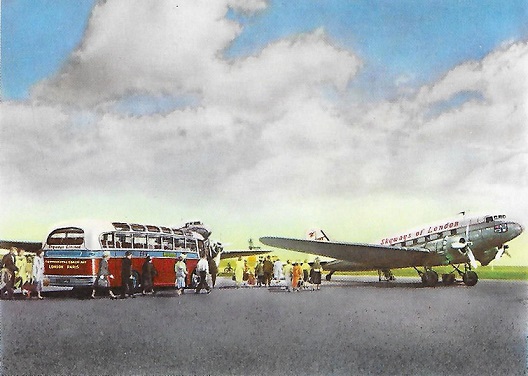
The Dakotas commenced the air cargo shuttle flights in 1964 and HS748 coach-air services to Tours and Vichy were added the following year along with a feeder service from Castle Donington to Lympne. Some swapping of the fleet went on with a 748 leased out in the West Indies during the quieter months and other turboprop airliners brought in during the hectic summer season. Air Freight Ltd and a parallel road freight company, TIR Freight, were formed in 1965 with the cargo Dakotas now leased from Skyways.
Lympne remained suitable for the Dakota operations but its limitations were highlighted when a leased F-27 sank into the soft ground during Easter 1965 and, more seriously, Skyways’ original HS748, G-ARMV, landed heavily on the grass strip, flipped on its back and skidded across the airfield inverted. Although the lack of any serious injuries testified to the HS748’s ability to protect its passengers, it was a sign that, unlike the Dakotas, the turboprop equipment was unsuited to Lympne’s grass strip. To partially alleviate damage to the grass surface, two parallel runways were marked-out to enable the use of a back-up strip if the main runway became too worn. However, the solution was either a move of base or a concrete runway. Eric Rylands’ company owned Lympne by this time, so a move to an alternative, such as Lydd, was not attractive and, instead, financing for a new runway was sought. In October 1967, the state-owned Transport Holding Company purchased a 50% share in the company and this underwrote the considerable investment in Lympne. Work began on the new 4500′ runway using a soil-stablisation technique to inject concrete into the sub-strata. While this method proved less than successful, flying was able to recommence in April 1968. G-AGYZ had been painted in Skyways Air Cargo colours in mid-1967 – essentially, the turquoise cheat line was edged with black rather than maroon. The freighter colours reverted to the standard Coach Air scheme in the summer of 1968. New routes were added to the passenger network with Luton to Ostend and Lympne to Ostend being flown in the summer of 1970 along with a service to Clermont Ferrand. The airport upgrade had been expensive and further support was sought from the Transport Holdings Company. Loans in excess on one million pounds had been advanced between 1967 and November 1970 when Skyways requested a further 300,000 to cover the quiet winter months. Amazingly, they received the first two tranches of 100,000 pounds before the government balked at the third installment. The airline declared that it had insufficient funds to continue operations and, on January 20th 1971, all flying ceased and the four HS748s and three Dakotas were grounded. (10). The airline went into liquidation on January 21st.
(10) The Dakotas were G-AGYZ, G-AMSM and G-AMWW. G-AMWX had been written-off in a forced landing on Mers-le-Bain beach, LeTreport, France, on 17th December 1965. There were no serious injuries in the landing which was made oblique to the beach, between groynes – local drivers had apparently used headlights to lay-out a flare path on top of the local cliff-line but there was no way of communicating this to the aircrew. Passengers and equipment were safely disembarked but the Dakota broke-up in the surf….are any bits of it still out there?
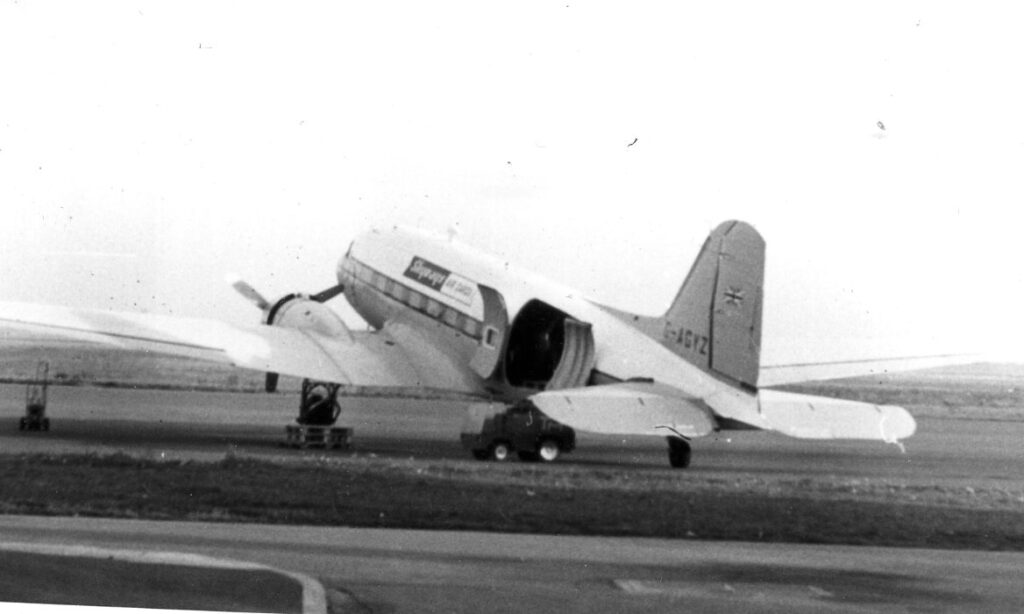
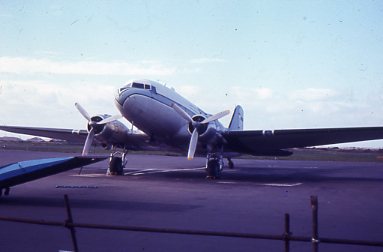
The three Dakotas had, in fact, been sold to Air freight Limited on 1st September 1970, G-AGYZ having flown a total of 21,851 hours. Skyways emerged from liquidation at the end of January 1971 with what was essentially a management buy-out led by former Coach Air management. John Knox, who had only recently joined Coach Air as Commercial Manager, became Managing Director of the re-named International Skyways Ltd. With the backing of Sterling Securities, 625,000 was paid for the airline including the four HS748s but excluding the Dakotas which were now owned by Air Freight Ltd. The Dakota fleet was repainted with Air Freight titles and, on February 21st 1971, they returned to service on the Lympne to Antwerp and Beauvais routes. The 748s, flying in Skyways International colours, had commenced operations on February 8th. By the end of the year, John Knox had relinquished the Managing Director’s role and, in February 1972, Dan Air began negotiations to buy Skyways International. The deal was sealed on April 12th and 650,000 was paid to Sterling Securities by Dan Air. The four HS748s were, again, included in the sale and joined a sub-section of the larger airline’s fleet with new Dan-Air Skyways titles.
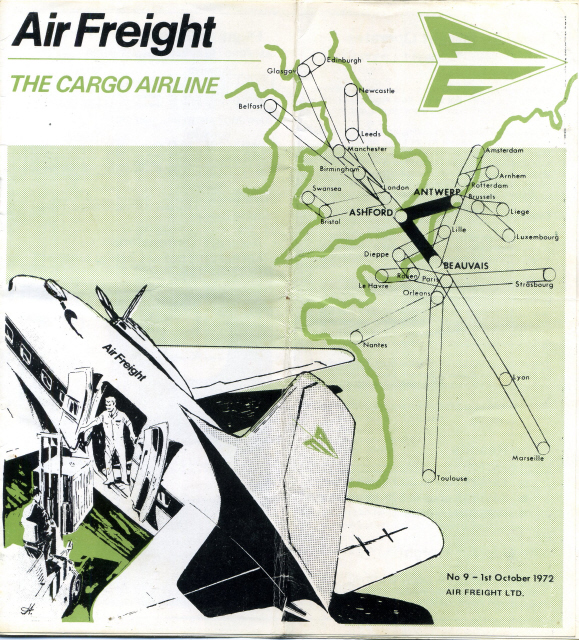
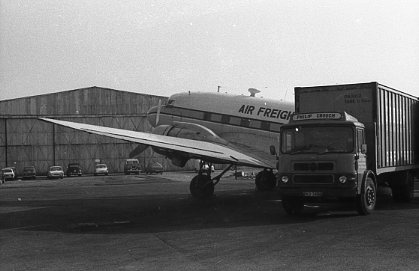
Eric Rylands had remained as Chairman of Air Freight Ltd and was one of the major shareholders along with the organisation’s freight agent in France, Beauvais Transit SA. Rylands was also joined on the board by Terry Beddowes as Managing Director, J.P.Coulson (Financial Director) and J.W.Faulkner (Commercial Director) in the UK and M.Tron-Sarrazin, L.Bloch and P.Delmotte in France. As well as the two regular freight routes, the Dakotas operated an eclectic mix of charters including many motor industry flights from Southend and the stressful carriage of a dolphin to a European zoo.
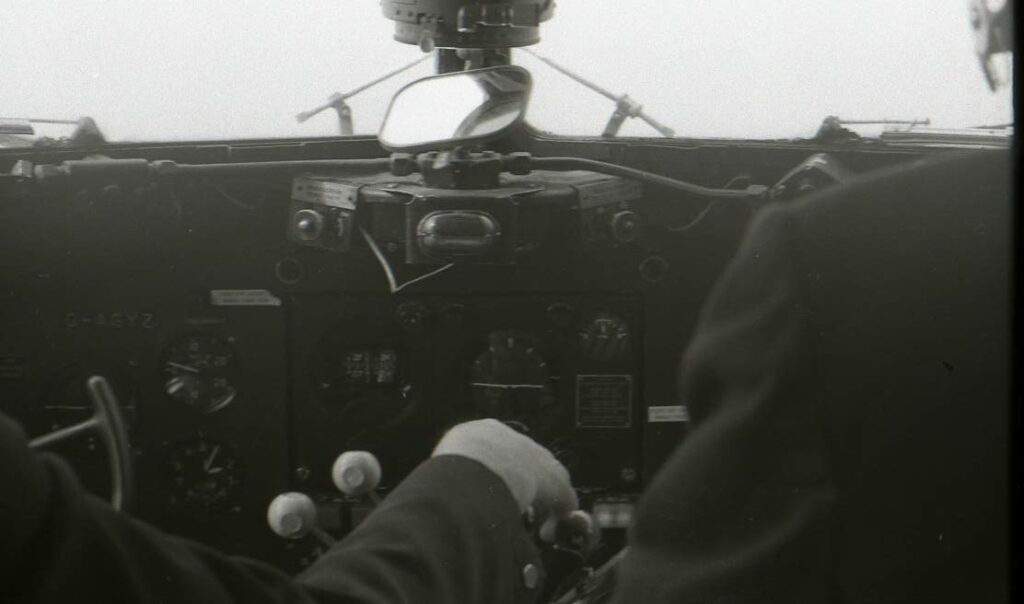
In October 1972, Air Freight took over Exeter’s struggling South West Aviation and C-47B G-APBC joined the fleet. Maintenance was still carried-out by Skyways or, as it had become, Dan Air Skyways, and G-APBC was rolled into the back of the hangar for extensive maintenance during Spring 1973. She was painted in the new Air Freight colours of white and khaki to match G-AGYZ and G-AMSM. By April 1973, only G-AMWW remained in the old turquoise Skyways colours. Five aircrews were now employed directly by Air Freight and these were supplemented by freelance contract pilots as necessary. G-AGYZ was considered by many of the pilots to be the fastest and most responsive of the four Dakotas.
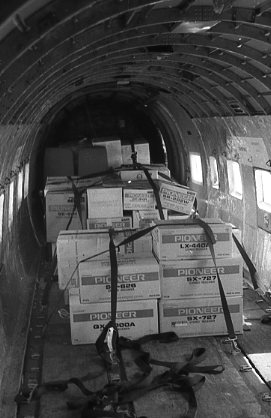
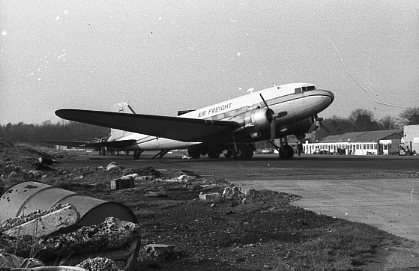
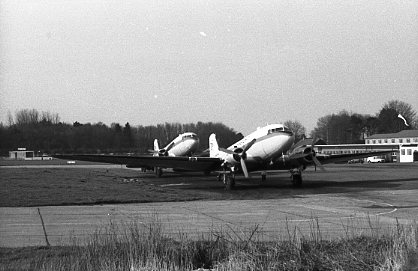
Air Freight’s business plan remained much the same as Eric Rylands had pioneered with Skyways – freight was delivered to Lympne by an associated company, Inter City trucks, having been consolidated at warehouses in Manchester, Birmingham and London. At the Beauvais end freight was loaded onto Beauvais Transit trucks for trunking throughout Europe and subsequent delivery to customers. Although a relatively small operator, the airline had discovered a lucrative niche with relatively little competition. Other all-cargo operators such as Saggitair, Midland Air Cargo and Ace Freighters had come and gone while IAS and Transmeridian concentrated on longer sectors. Regular large shippers included the motor industry, high quality shoe manufacturers, the cosmetics industry and electronics manufacturers.
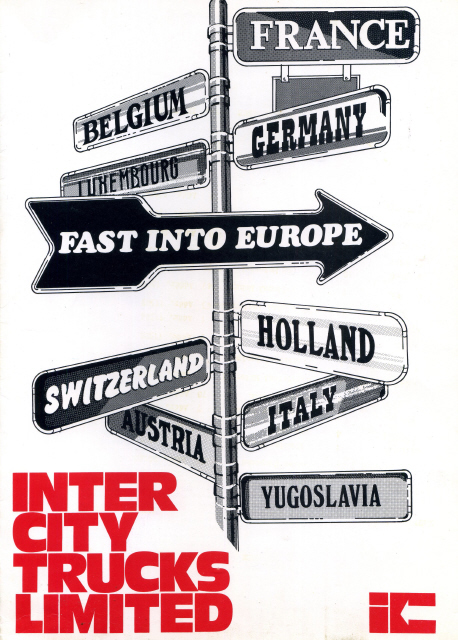
In autumn 1974, Air Freight halted operations from Lympne where new owners were looking to develop the airfield for housing and industry. The single concrete runway had been beginning to look like a patchwork and there was a persistent lack of freight warehousing space. The Company moved to the airfield built by Silver City at Lydd on the Romney Marshes. Although Air Freight had occasionally used Ferryfield in the past, it was an airfield which had seen little use since British Air Ferries had halted operations from there in 1971. Kestrel Airways had attempted operations from there in early 1971 using their single Dakota G-AMFV but had found that the location was too remote for their customers. This was of less relevance for Air Freight as their customers delivered freight to the Company’s truck depots in the main UK cities. Business continued apace from Lydd and the airline added extra Dakotas from Air Anglia and Humber Airways. G-AMSV had been bought from Humber Airways in June 1975 and G-AGJV and G-AOBN arrived in November. The airline’s name was changed to Skyways Cargo Airline in May 1975, reviving the famous old identity and, by the end of the year, it had become Europe’s largest Dakota operator. New warehouse facilities were constructed and maintenance functions were taken into the Company’s control.
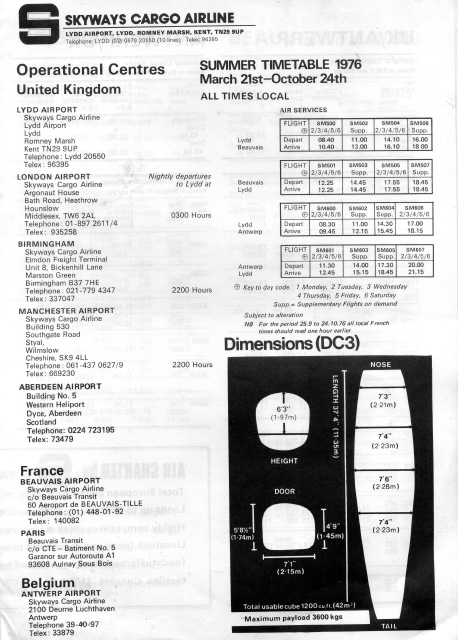
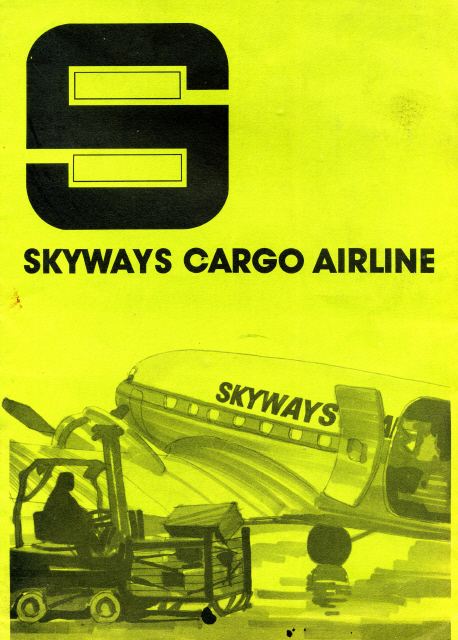
The airline’s Managing Director, Terry Beddowes, was an ex-RAF man (Vickers Wellingtons) and maintained a keen interest in his fleet’s history. A paragraph in the Daily Telegraph’s Peterborough column for 16th October 1975 quoted Beddowes and mentioned G-AGYZ’s Arnhem history. The subject was further developed the following month in the Daily Mail for 25th November 1975 which featured a picture of Terry Beddowes standing in front of G-AGYZ. Peter Greig’s article gave a condensed history of the DC-3 and noted that it had flown a total of 29,976 hours and 57 minutes.
The Royal Air Force Association ‘adopted’ G-AGYZ at a ceremony on 2nd May 1976 which the Mayor of Maidstone and the CO of RAF Biggin Hill attended. There was an unveiling of an appropriate RAFA logo which had been inscribed on the aircraft’s nose and Skyways’ pilot Frank Czekalski flew G-AGYZ in an impressive display to demonstrate that there was still life in the old girl.
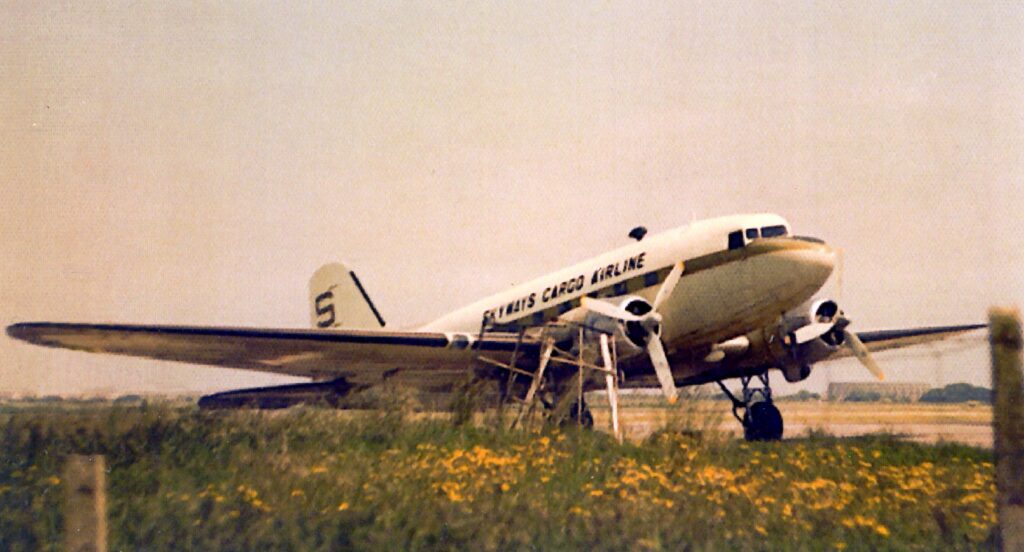
The airline was keen to capitalise on opportunities arising in the offshore oil industry. While Aberdeen was well-served by British Airways, a lot of oil-related work used Lerwick in the Shetlands as a supply base. Several other C-47 operators also had ambitions in this direction but many were perceived as under-capitalised with fleets which were too small. Kestrel, Bellfield Trading, Site Aviation and Humber Airways had all attempted to get contract work for their Dakotas but had failed to establish themselves. The oil companies preferred the idea of larger turboprop aircraft for passenger flights and Air Anglia and British Air Ferries had established themselves in this market. The Skyways and Air Anglia Dakotas were considered very acceptable for freight charters and G-AGYZ was positioned to Dyce in July 1975. Initially used on just Aberdeen to Shetland freight shuttle flights, she was joined in August 1975 by G-AMSV which also offered passenger capabilities for services around the North Sea coast. G-AGYZ, however, sometimes traveled further afield on oilfield charters, staging though Malta on the night of July 23rd/ 24th en route to July. The return flight also night-stopped in Malta the following evening. In addition to the oil industry work, Skyways operated freight schedules for some of the major European airlines during 1975: Dakotas flew Heathrow to Brussels cargo flights for Sabena and Gatwick to Amsterdam newspaper flights for KLM.
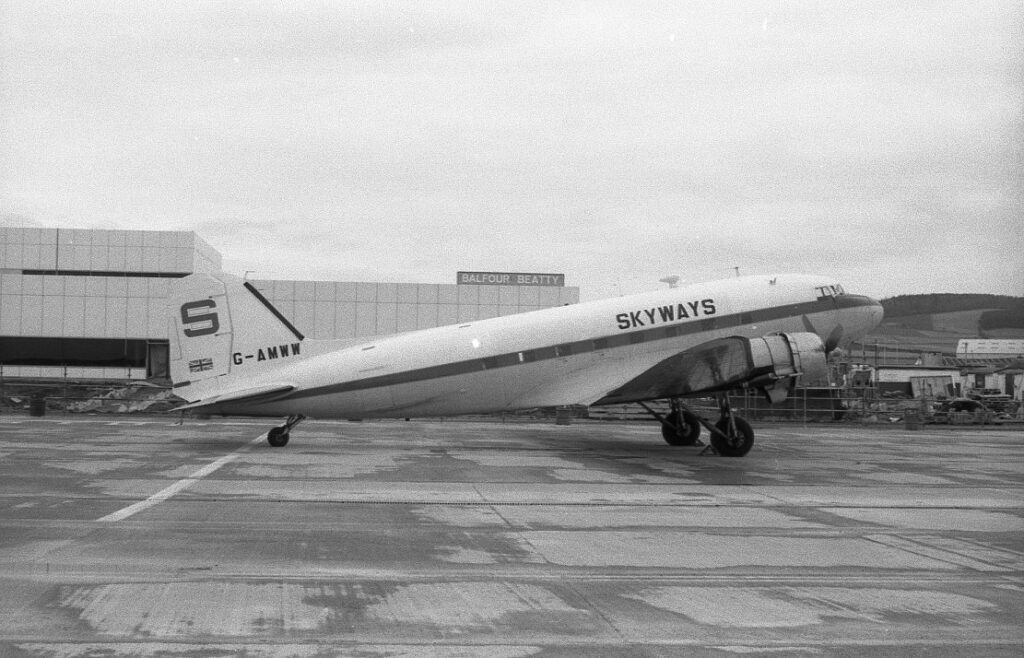
1976 also saw G-AMWW, G-AOBN, G-AMSV as well as G-AGYZ operating from Aberdeen with as many as three of the seven-strong fleet based in Scotland at any one time. The Company opened an Aberdeen office at the Heliport and aircraft were operated in both freight and passenger modes. Elsewhere, the two regular routes from Lydd to Beauvais and Antwerp continued to prosper and were supplemented by frequent freight charters. Beauvais is better located to serve the Paris market than Le Touquet which, in the 1970s, was British Air Ferries’ French terminal. As with all cargo operations, there were seasonal peaks and troughs but Skyways was, perhaps, less affected than most as it carried a high proportion of industrial goods as opposed to either consumer goods or perishable freight. Imports tended to peak in September, exports in November while January to May could be variable. The daily SM500 flight to Beauvais was a guaranteed departure and the afternoon SM504 was flown on most days. Supplementary services could be added at 11:00 (SM502) and 14:00 (SM506). The 500 generally carried freight dispatched from Manchester and Birmingham on Inter City Trucks services the previous evening while the SM504 carried consignments shipped from London the same morning, topped-up with other non-urgent goods. The first return flight from Beauvais, the SM501, generally achieved a load factor of over 50% while later flights inbound to Kent could struggle to be economic.
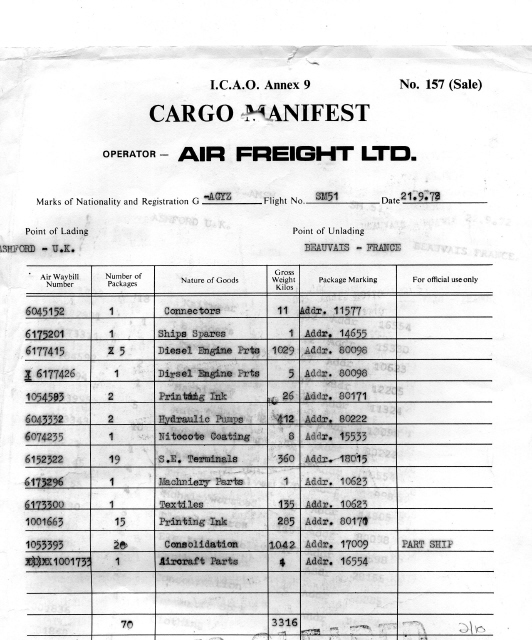
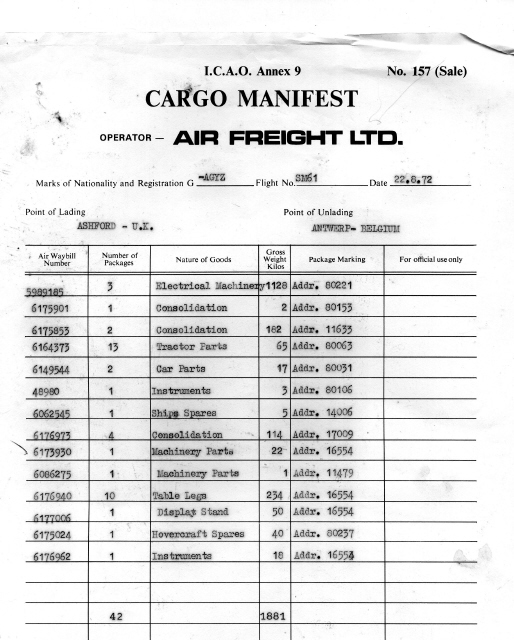
The Antwerp flight generated enough freight for a daily service but rarely enough for additional flights. While Antwerp lies in the shadow of both Brussels and Ostend airports, it does benefit from a large number of shipping agents in the port and this helped generate business. In parallel with the Beauvais route, Antwerp enabled Skyways to keep the Dakota utilisation at around 800 to 1000 hours per annum. This is reasonably low but in line with what G-AGYZ had flown since departing BEA (where she had completed around 1600 hours per year). Charter flights were therefore a welcome supplement and the CAA’s change of policy to allow split charters was important. Previously, an aircraft the size of a Dakota could only have a single charterer and the minimum consignment size was 1000 kg. Skyways was granted a license enabling multiple charterers to hire the aircraft with a minimum 500kg consignment. British Airways objected, strenuously, but too late and Skyways obtained their license. The complaints did, however, mean that, in 1976, Skyways held the only such license for cross-channel operations.
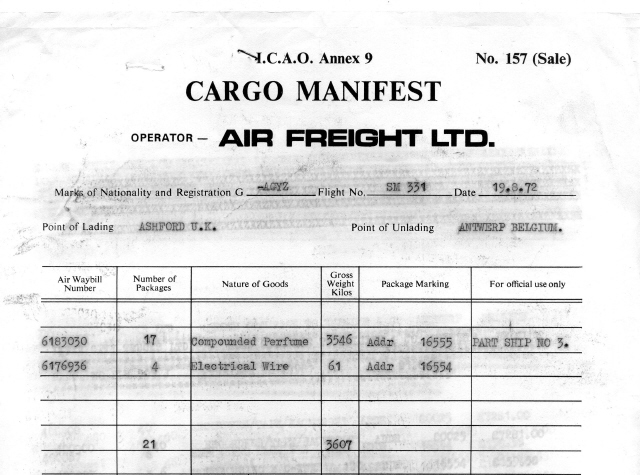
The airline’s mixed road/ air freight model was able to offer end-to-end shipping rates around 30% lower than IATA tariffs for a scheduled service – and even lower for groupage services. For ultimate economy, a shipper could choose road freight for the cross-channel sector as well and the freight would be delivered by TIR Freight who operated three days a week on the Paris route. The rates for the airborne sector could have been cheaper but the CAA ruled that they had to match BA’s charges – a restriction on free competition with the State airline.
As with many airlines at that time, flights on behalf of Ford were particularly prevalent with a regular flow of components between Ford Germany and UK factories via Southend, Coventry and Birmingham airports. The airline’s trucking company, TIR Freight, could also offer scheduled road freight to Frankfurt, Cologne, Stuttgart and Milan for the motor industry.
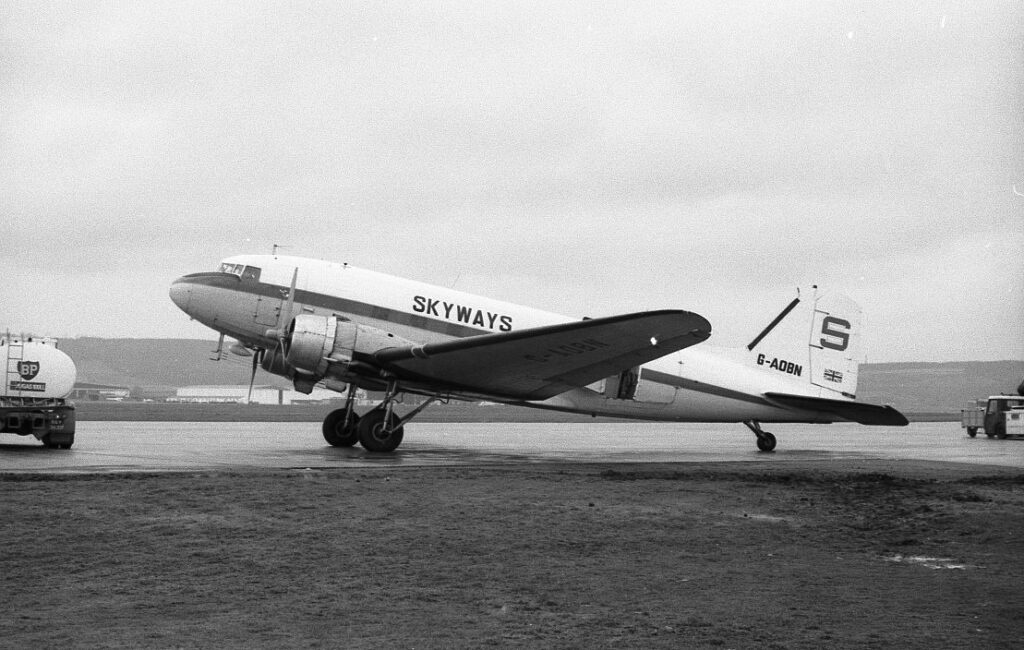
The Skyways Cargo of early 1977 therefore had every semblance of a successful operation. However, one major issue loomed: what could replace the Dakotas? While oil industry clients were requesting turboprop equipment, the capital costs of more modern aircraft demanded a higher utilisation than Skyways was achieving with their contemporary fleet. Kestrel Airways, Sagittair, Midland Air Cargo and Ulster Airways had all stumbled at this hurdle and British Air Ferries and Air Anglia were at a similar juncture.
G-AGYZ was one of the first two Dakotas to depart, joined shortly by G-AOBN, both en route to Ethiopia under the auspices of the World Health Organisation. ‘YZ was sold as ET-AGQ to the Ethiopian Ministry of the Interior on June 4th 1977 and was passed to Ethiopian Airlines on June 29th. G-AOBN was sold as ET-AGR to Ethiopian Airlines on July 20th 1977 and was, almost immediately, destroyed by an air attack on Jigiga airfield on 12th August 1977 (11). It was an early victim of the Ogaden War between Somalia and Ethiopia. G-AGYZ, now ET-AGQ, survived slightly longer but was written-off on 25th October 1978 at Degeh Bur, also in the Somali area of Ethiopia and just 100 miles from Jigiga. ET-AGQ had been operating a cargo flight with four crew and nine further passengers. The Second Pilot was landing the Dakota when a gust of wind apparently affected his control of the aircraft. The Captain took control and completed the landing but the aircraft failed to brake quickly enough and was ground-looped to starboard. The port main undercarriage leg hit a drainage ditch and collapsed (12). There were no major injuries but, although there were rumours that the Dakota might be recovered, it was written-off as ‘damaged beyond repair’, the final act in a long and productive career.
Skyways remained proud of the remaining Dakotas and hosted a further reunion of RAF veterans of 233 Squadron in August 1978. The RAFA in Headcorn gathered together 30 ex-members of 233 and also one of the first three ‘Flying Nightingales’, Edna Morris (nee Birbeck). LAW Edna had met her husband, Flt.Sgt. Glyn Morris, during her 233 Squadron service. Glyn had been a Wireless Operator on the crew of KG313, usually under the command of the Flight Commander (and short-term CO of the Squadron) B. Miller. Subsequently, Squadron Leader Miller’s second pilot, Flt.Lt.Frank Priestley, graduated to Captain of his own crew and retained Flt Sgt Morris. FZ681 was Flt.Lt Priestley’s regular Dakota for much of the second half of 1944 and 1945 and both he and Glyn Morris flew in the aircraft on Operation Varsity. Further information is in the 233 Squadron RAF Operations thread detailing the ‘Flying Nightingales’.
Ken Cranefield, pilot of FZ681 at Arnhem, and his navigator, Terry Holmes, met at the Lydd event for the first time since Terry dropped the badly injured Ken at the RAF hospital on the evening of September 23rd 1944. Ken’s wife, Marjorie, who met her husband while nursing him during his convalescence, was also at the reunion.
Don Saunders was also present at the Lydd reunion. As a Pilot Officer with 233 Squadron, he had flown FZ681 only infrequently, his regular Dakota being KG433. However, he had been at the controls of FZ681 on December 11th 1944 for a mission taking stores from Bicester to B53/ Merville. Since leaving the RAF he had joined the Metropolitan Police and had become an admired detective with the Murder Squad. Rising initially to the rank of Det.Chief Superintendent, he had led several high profile investigations and, eventually, he was promoted to become Commander of the Metropolitan Police #1 District CID.
The thirty veterans enjoyed the meeting at Lydd, all that was missing was…..G-AGYZ. The former FZ681 had, by that time, been in Ethiopia for over a year and was only a couple of months short of her last flight. Not to be discouraged, Skyways produced G-AMWW, promoting her as a Berlin Airlift veteran, and had painted an RAFA insignia on the nose. The new badge was unveiled by Air Vice Marshall John Stacy.(13)
(11) ET-AGR, and possibly ET-AGQ too, was operated by RRC Air Services – The Relief and Rehabilitation Commission.
(12)Details from www.aviation-safety.net
(13) Information from the Daily Mail, August 1978 and the Daily Telegraph Obituary for Edna Morris when she died, aged 80, in 2014.
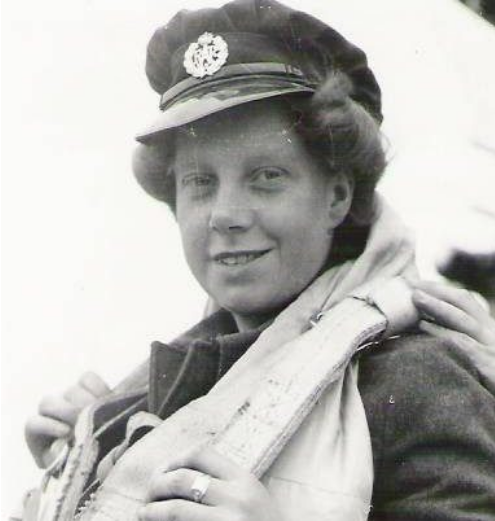

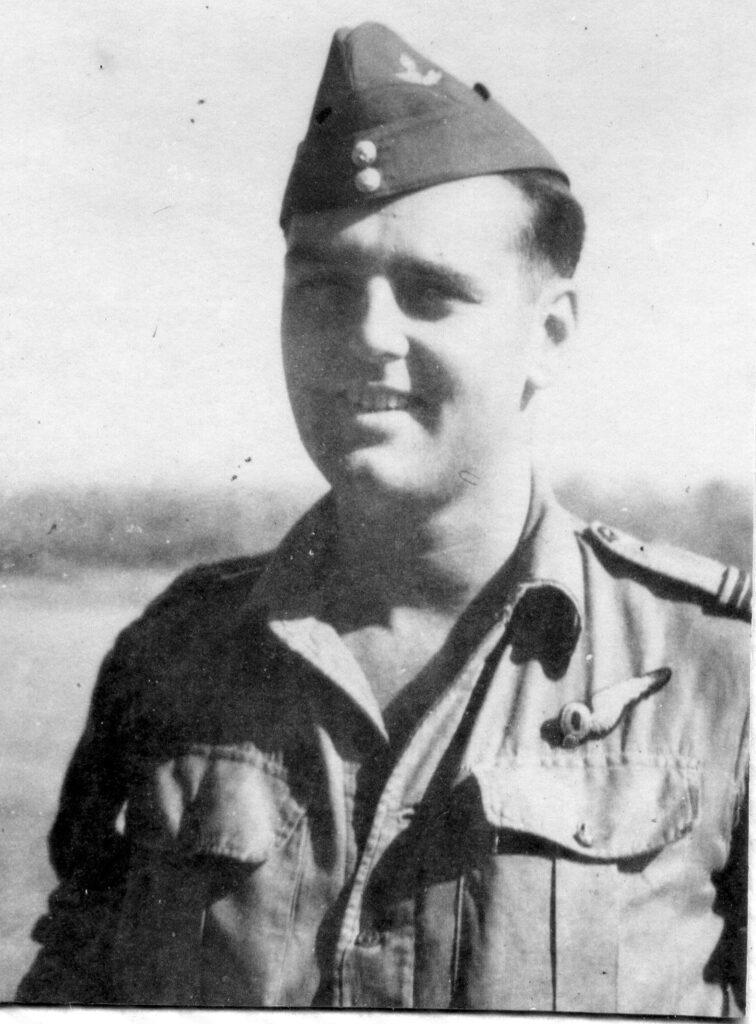
SKYWAYS AFTER G-AGYZ…..
The Skyways Cargo fleet was further depleted on 17th August 1978 when one of the old originals, G-AMSM, was destroyed during a take-off incident at Lydd. The aircraft had just taken-off when it veered to port; the co-pilot over-corrected to starboard, swerved to avoid a windsock mast and struck the grass. Coming to rest on its belly, an oil fire broke-out in the starboard engine. The fire brigade attended promptly and no-one was injured but G-AMSM was a write-off (12).
Pursuing their plan for evolution, Skyways purchased turboprop equipment the following year. While Kestrel and Ulster had attempted to replace Dakotas with Viscounts, BAF had gone with Heralds (later Viscounts) and Air Anglia had been successful with Fokker F-27s. Skyways spotted that Wien Alaska were selling their fleet of Fairchild FH227bs, the license-built F-27, and negotiated to buy two aircraft (14). New, large cargo doors were fitted and the aircraft painted in the white and khaki colour scheme (by Fields?). G-SKYA was registered to Air Freight Ltd at Lydd on 18th January 1979 and G-SKYB was registered to Skyways Aviation Ltd on 19th April 1979. They flew the regular freight services to Beauvais, were frequent visitors to Southend and flew Luton to Amsterdam newspaper flights. The FH227s also took over the Eastern Airways nightly cargo schedule from East Midlands to Amsterdam. G-SKYB flew passenger services between Lydd and Jersey in May 1980 and there were plans afoot to revive the Coach Air services to Beauvais and also fly some services on behalf of Dan Air. The airline also held contracts with Royal Mail to fly mail from Lydd and Gatwick to East Midlands and Liverpool and flew an increasing number of freight charters from Luton and Southend as well as a Stansted- Strasbourg – Milan charter with G-SKYA on August 28th 1980. However, business was not as brisk as anticipated during the economic recession and, by summer 1980, Skyways was in financial difficulties. G-SKYB was officially charted back to Air Freight Ltd on June 10th 1980, presumably as an accounting exercise, but the airline ceased operations in October 1980. The final Royal Mail flights were operated on the evening of October 15th and the FH227s were positioned to Southend following repossession (15). G-SKYA was registered to Greyhound Equipment Finance Ltd on 17th October 1980 and G-SKYB was recorded as being sold in Brazil on the same day. Both ended-up with the Brazilian airline TABA operating in a cargo and passenger role. G-SKYA unfortunately crashed while landing at Tabatinga when on an internal flight from Eirunepe in June 1982. The aircraft hit a lighting tower and crashed into a car park killing all 24 on board (12), G-SKYB continued to serve with TABA but was seen in a derelict condition at Belem in 2004.
(14) Some sources say that three aircraft were originally to be purchased.
(15) Details from Propliner Magazine editions 7-9.
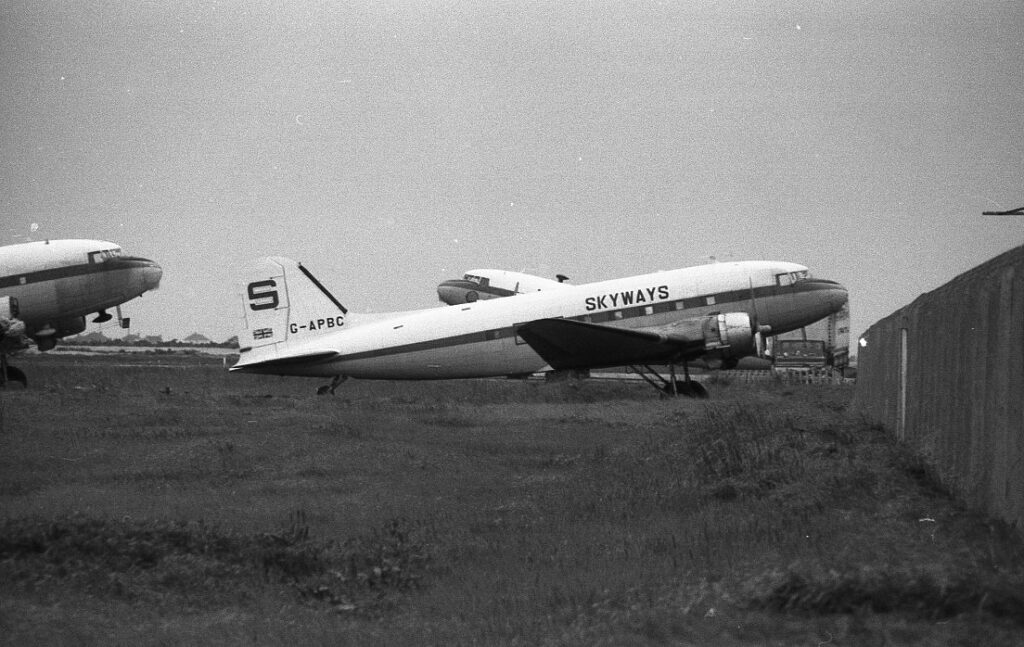
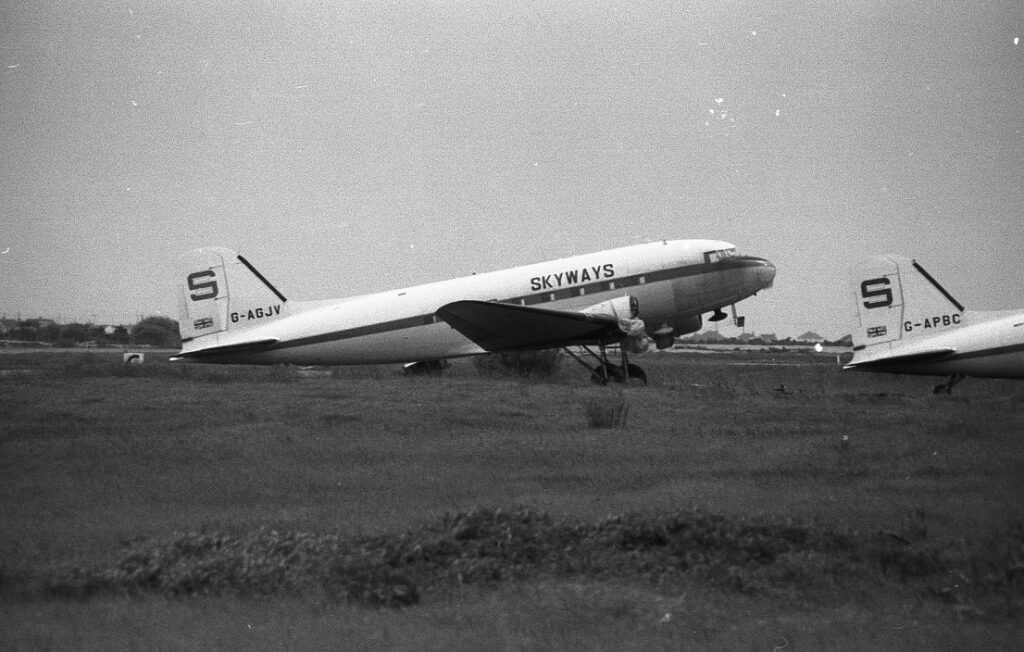
Hits: 230
